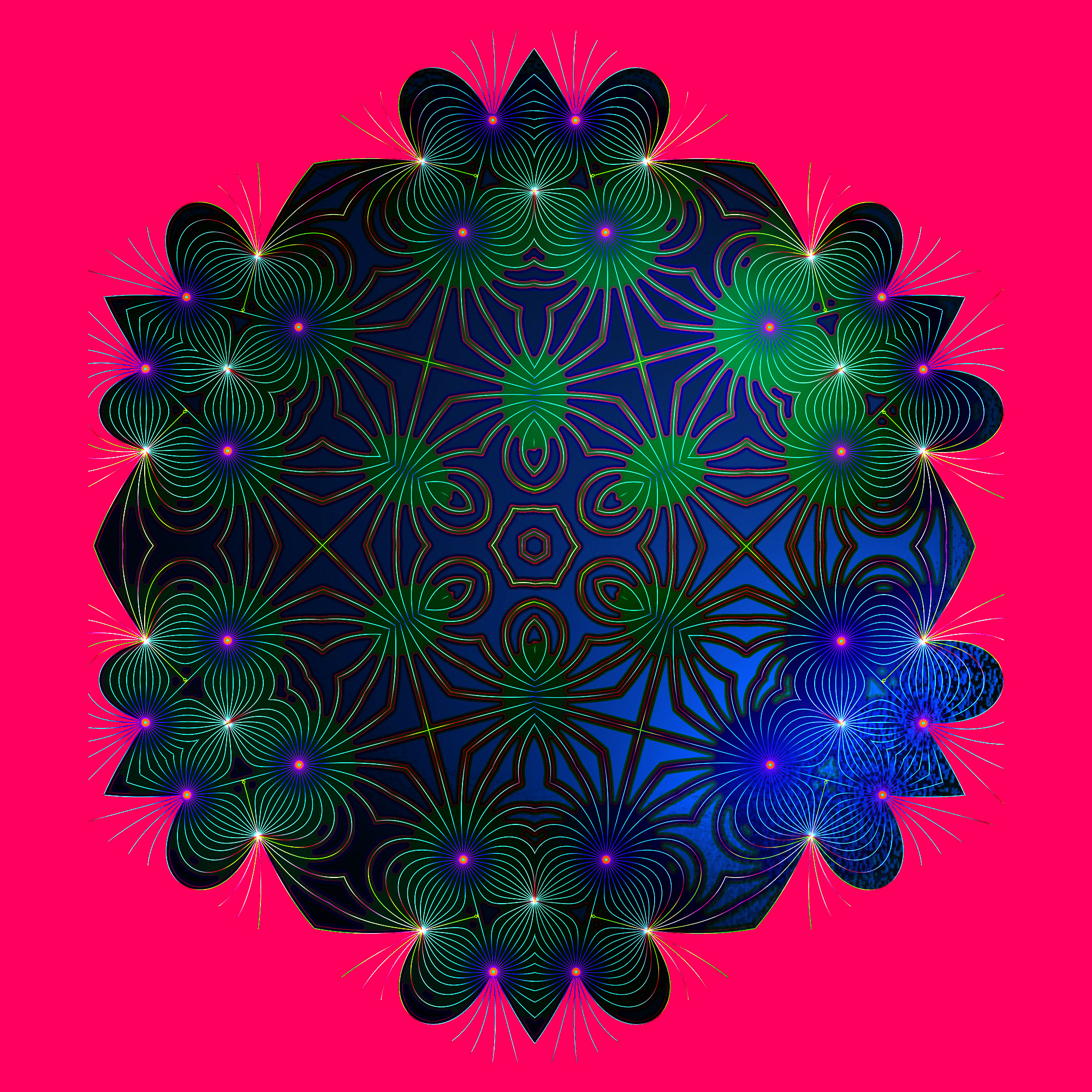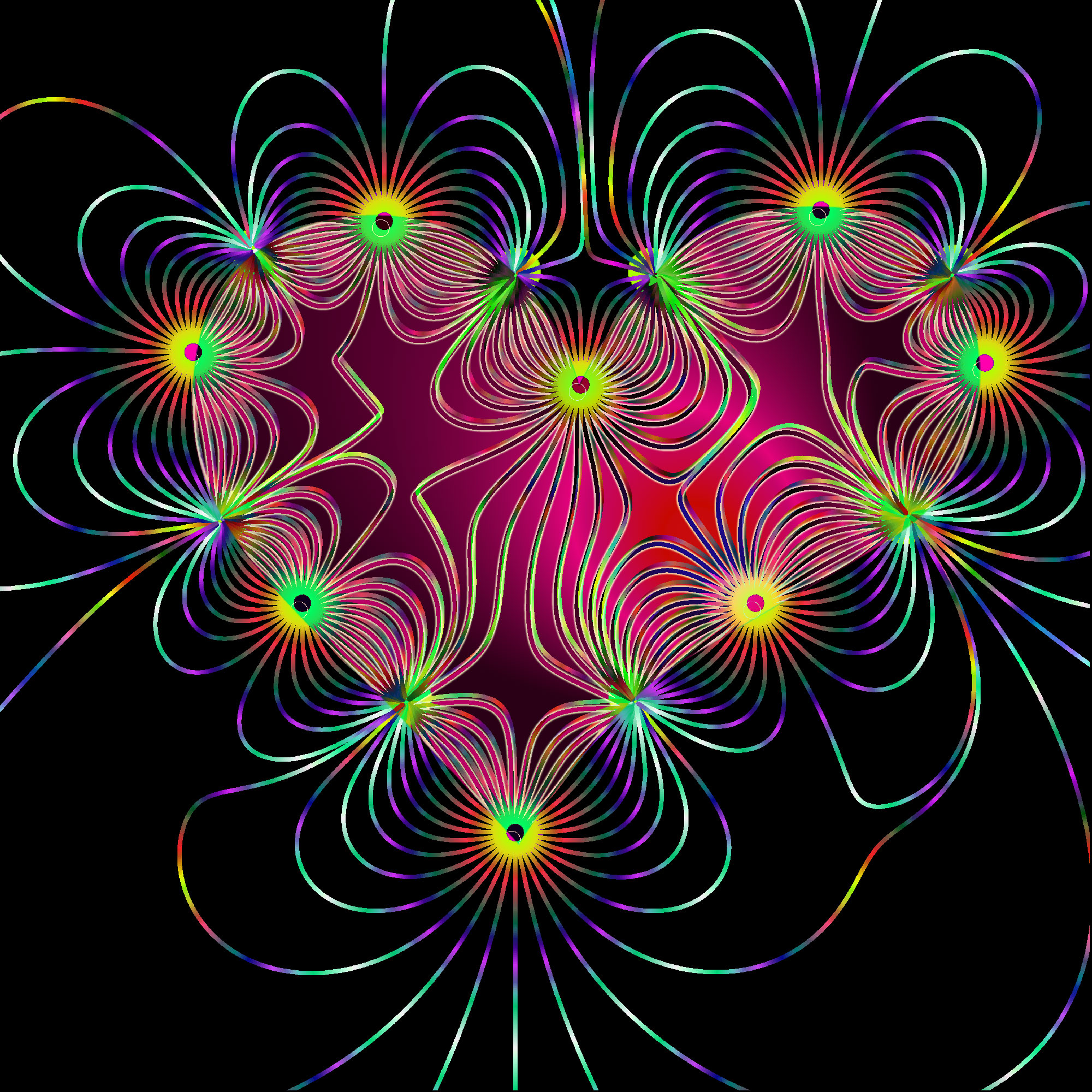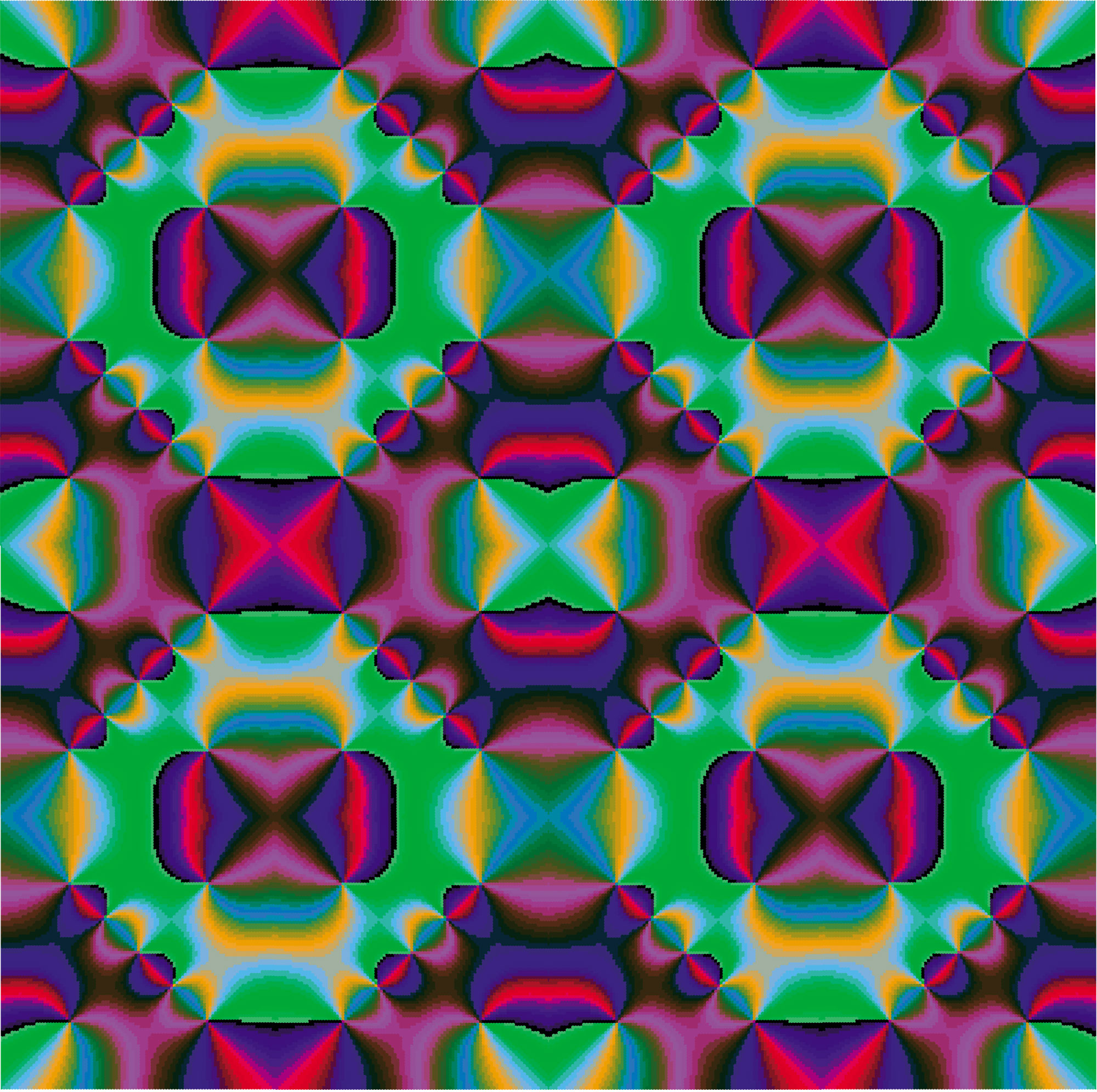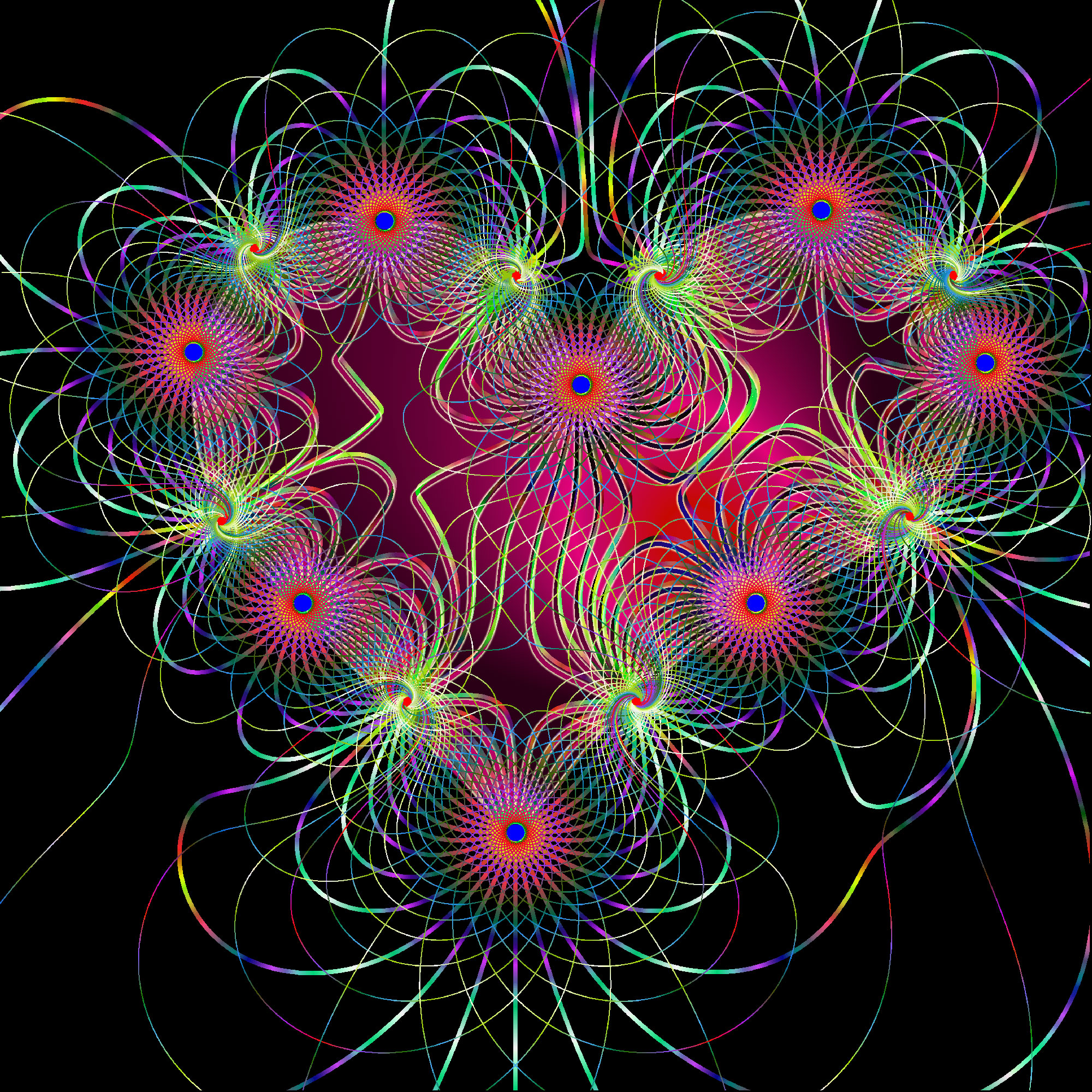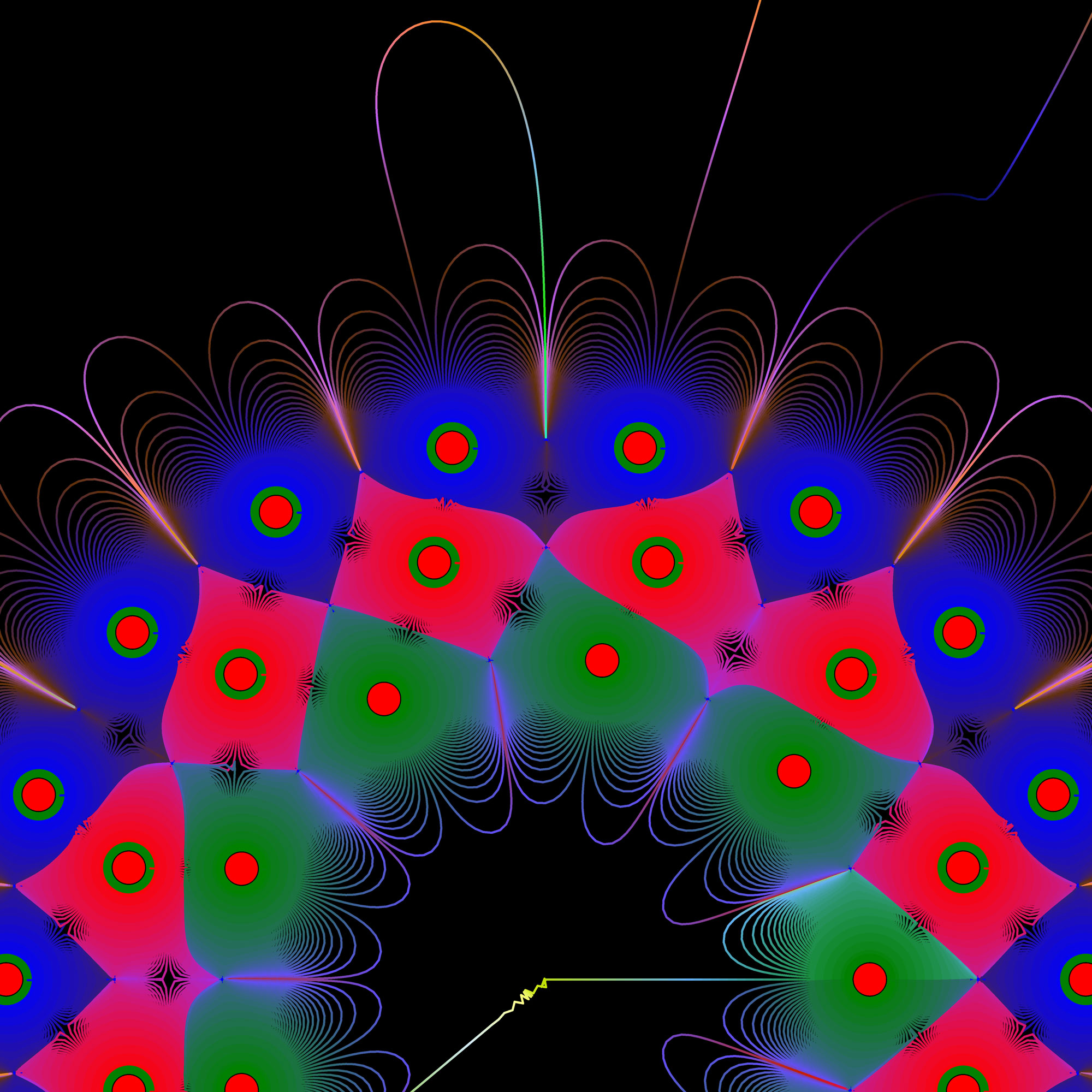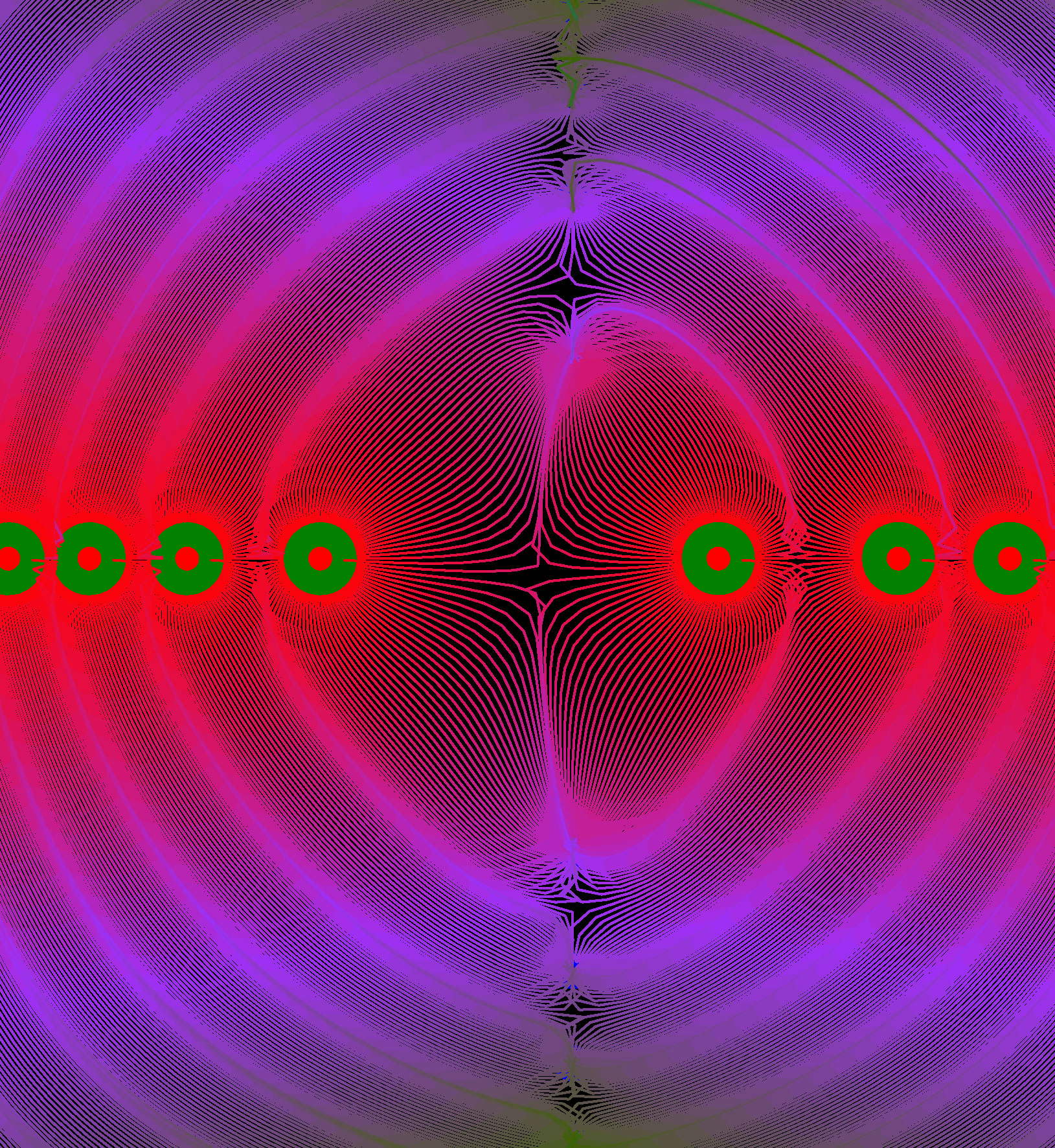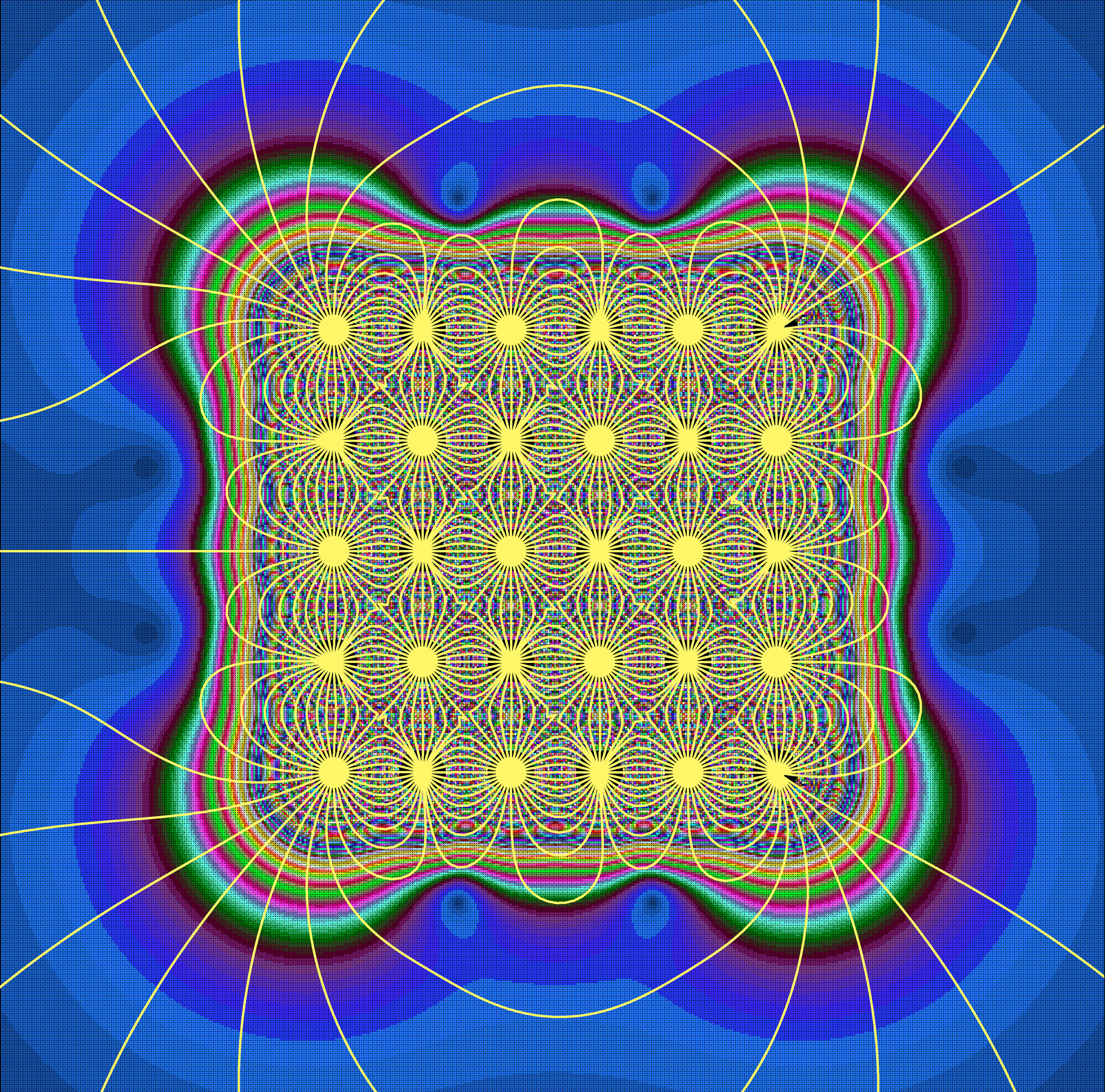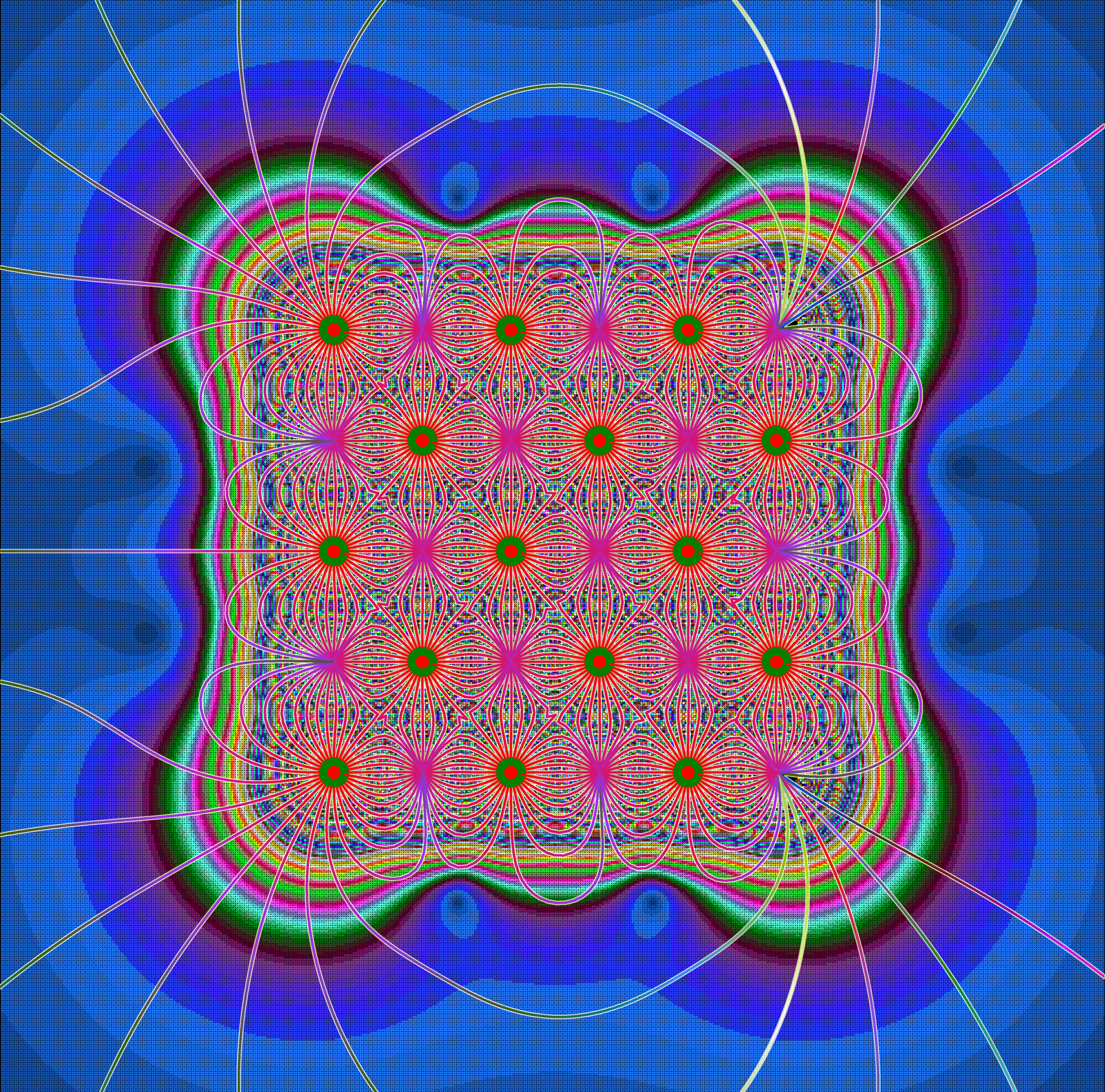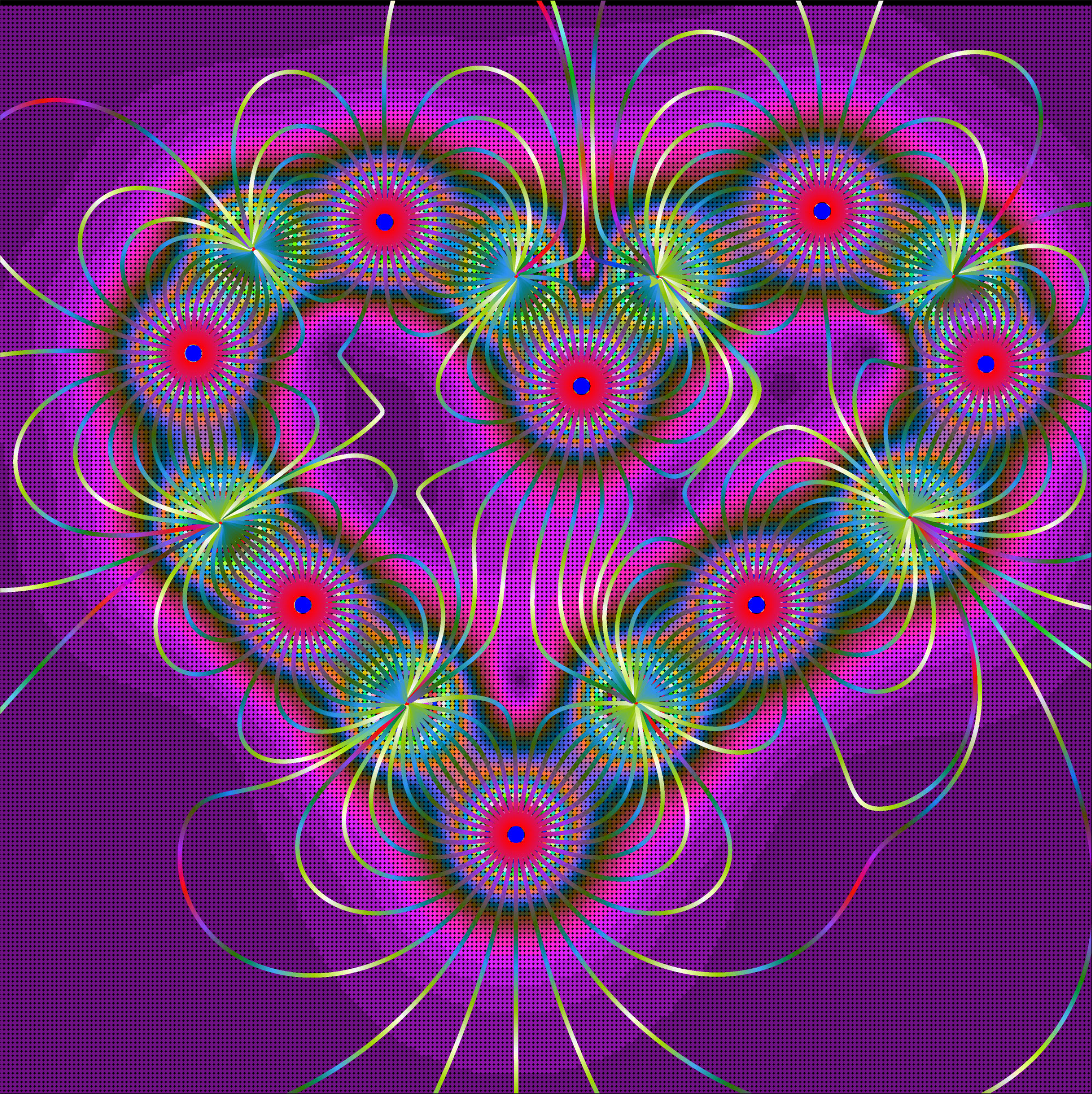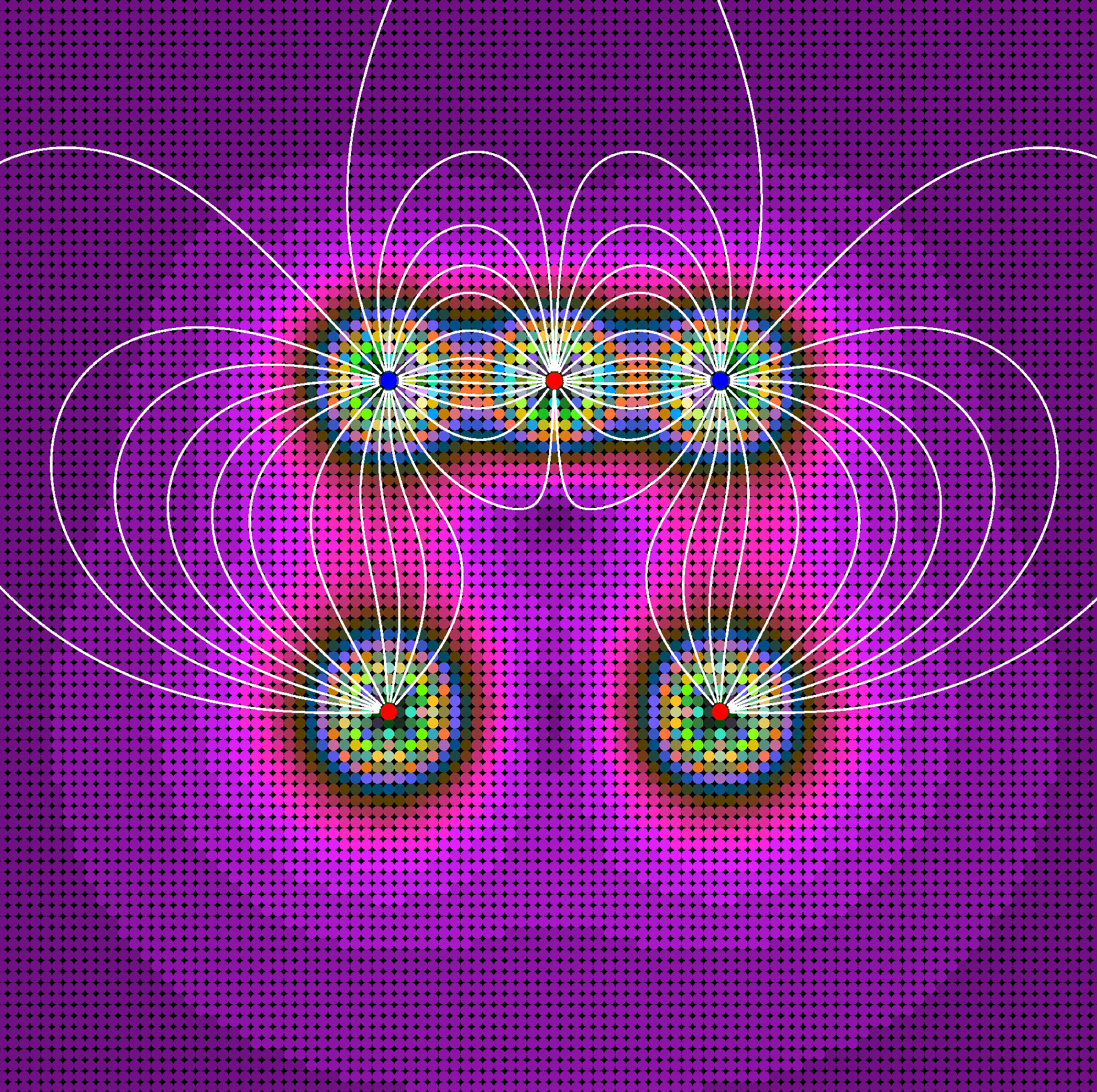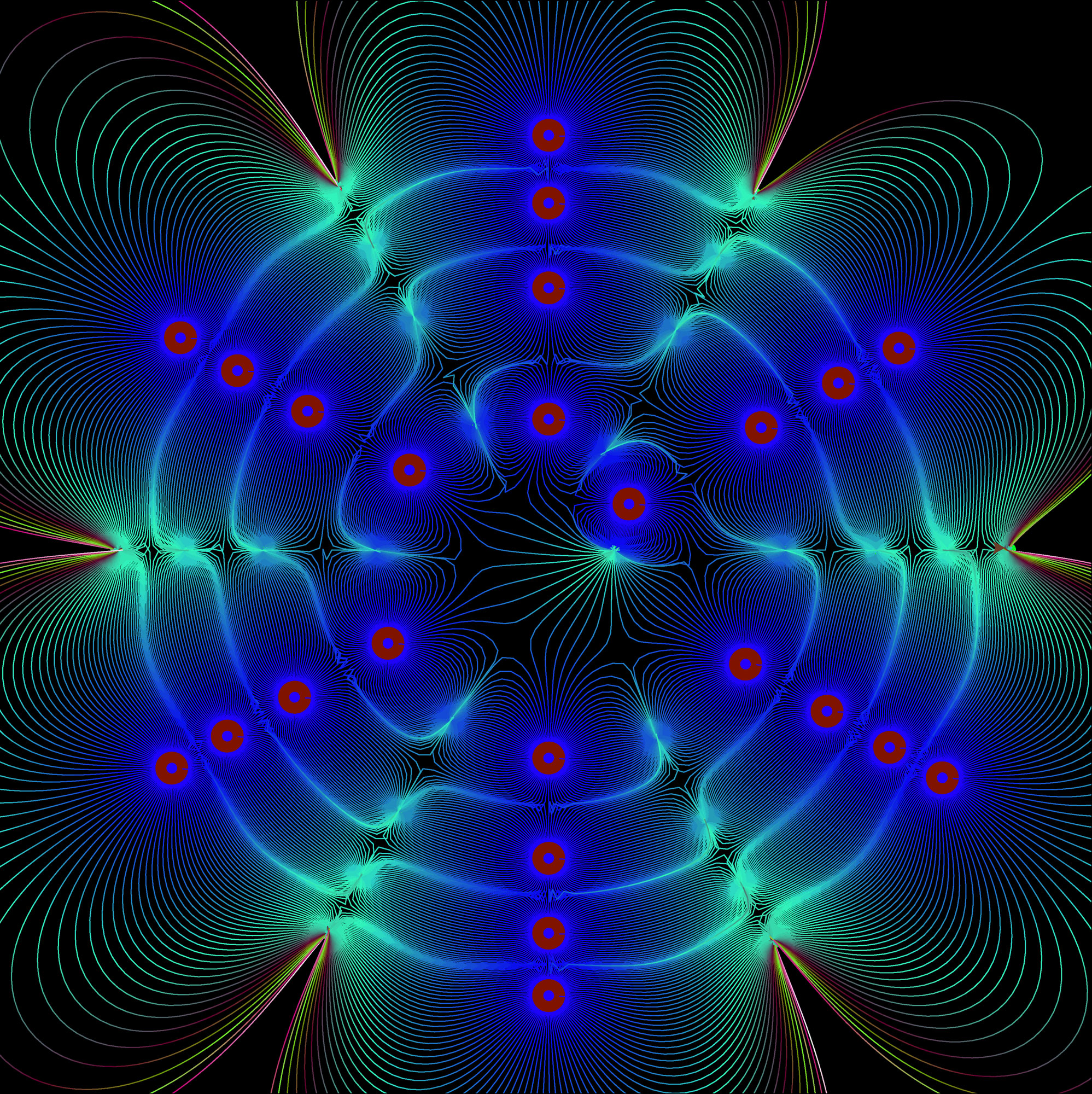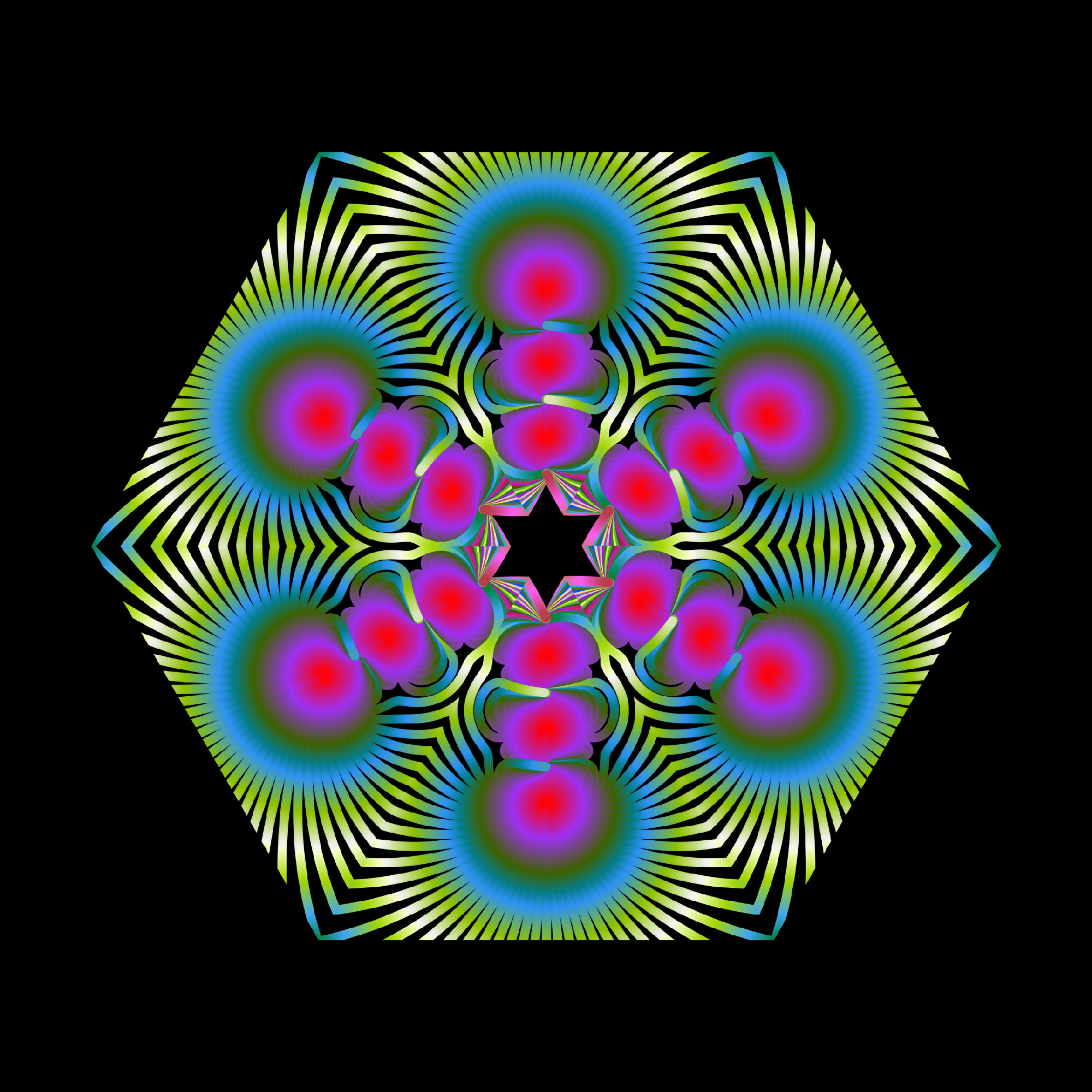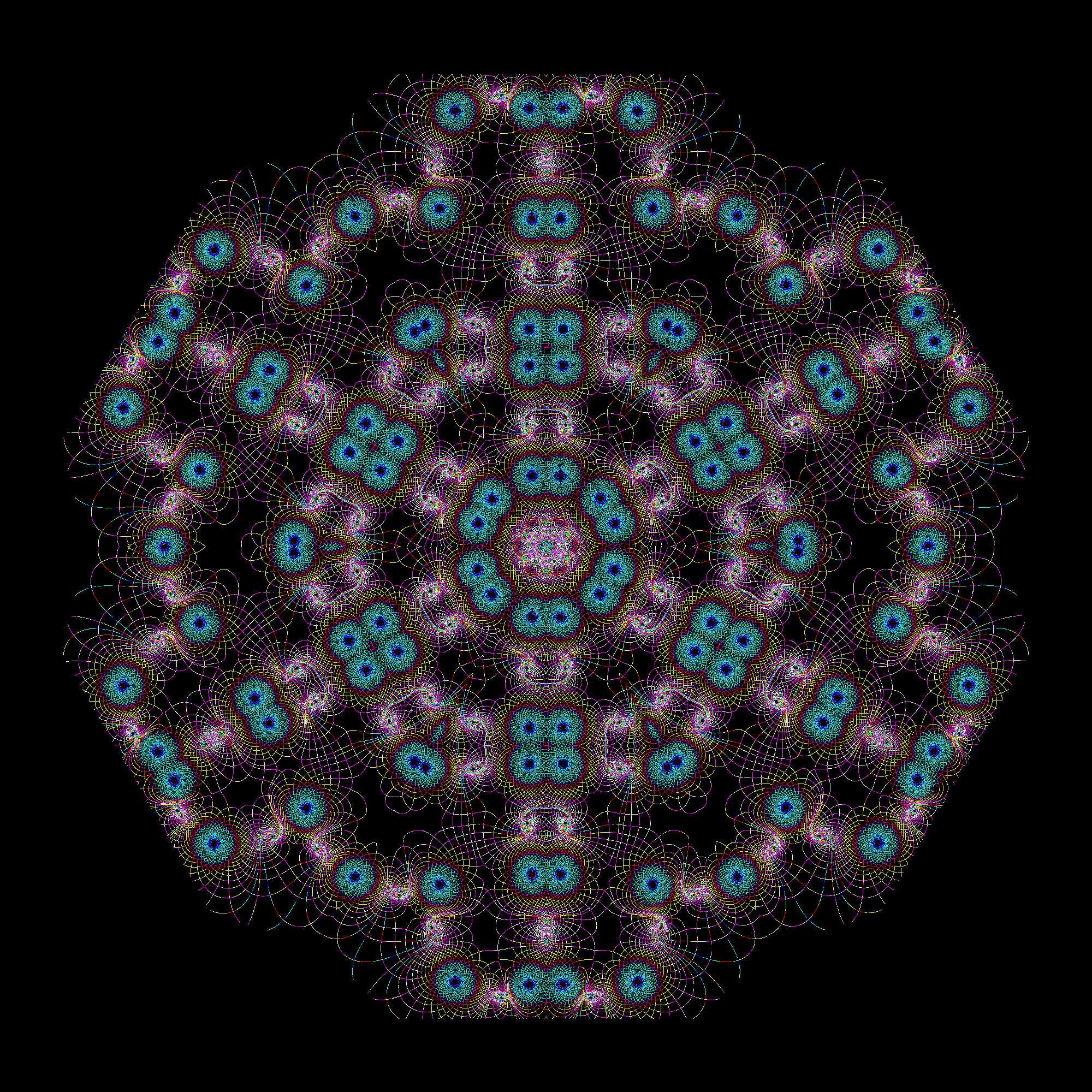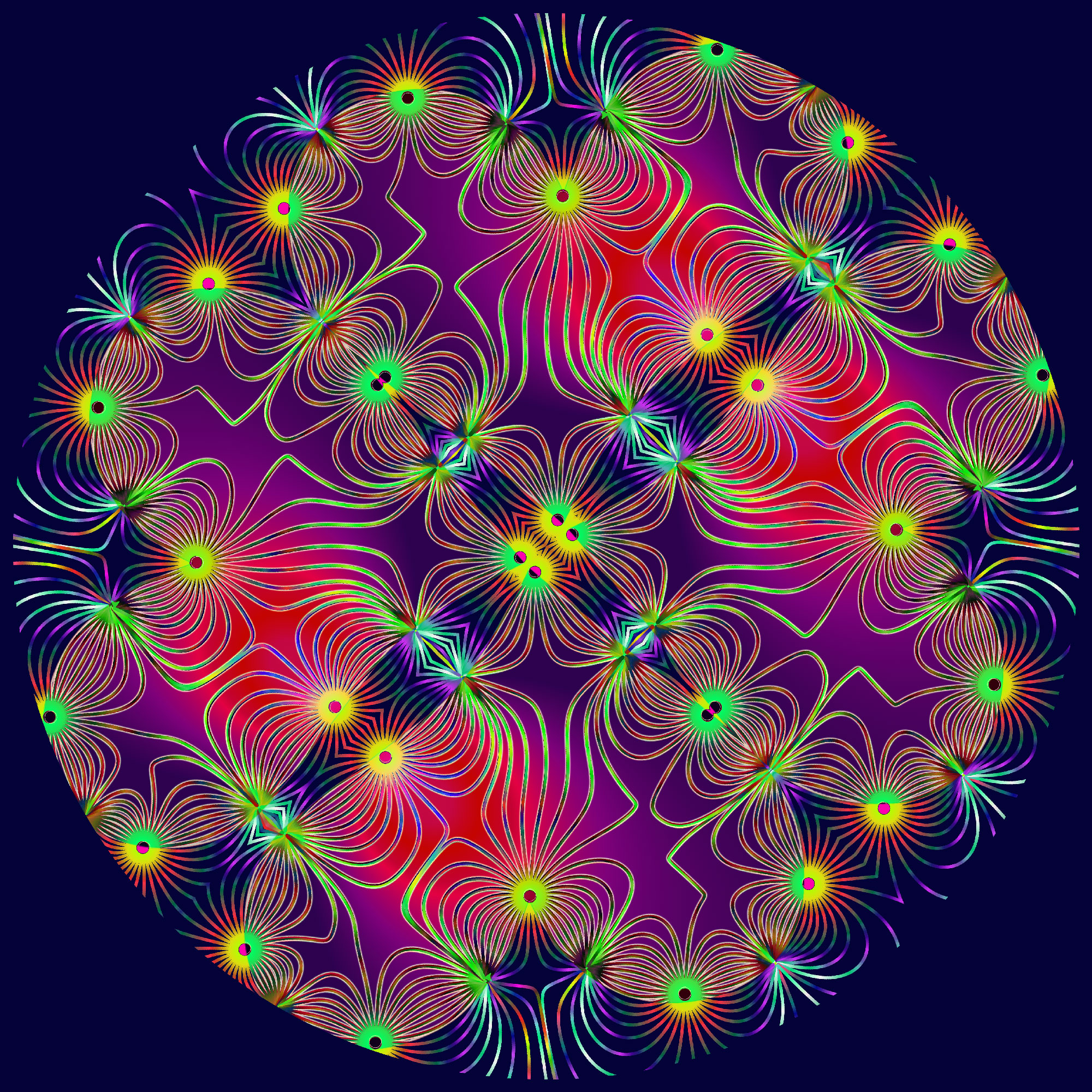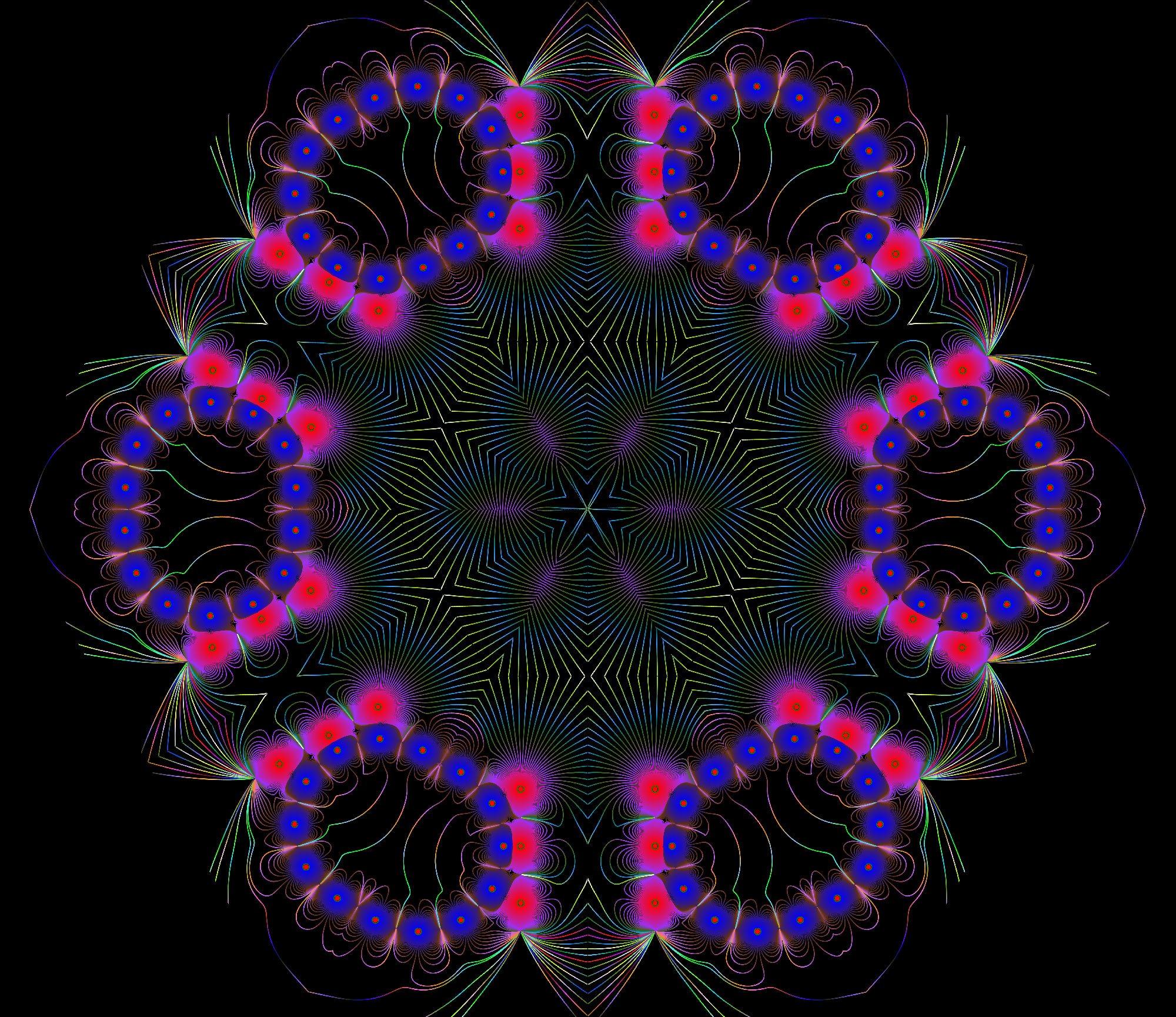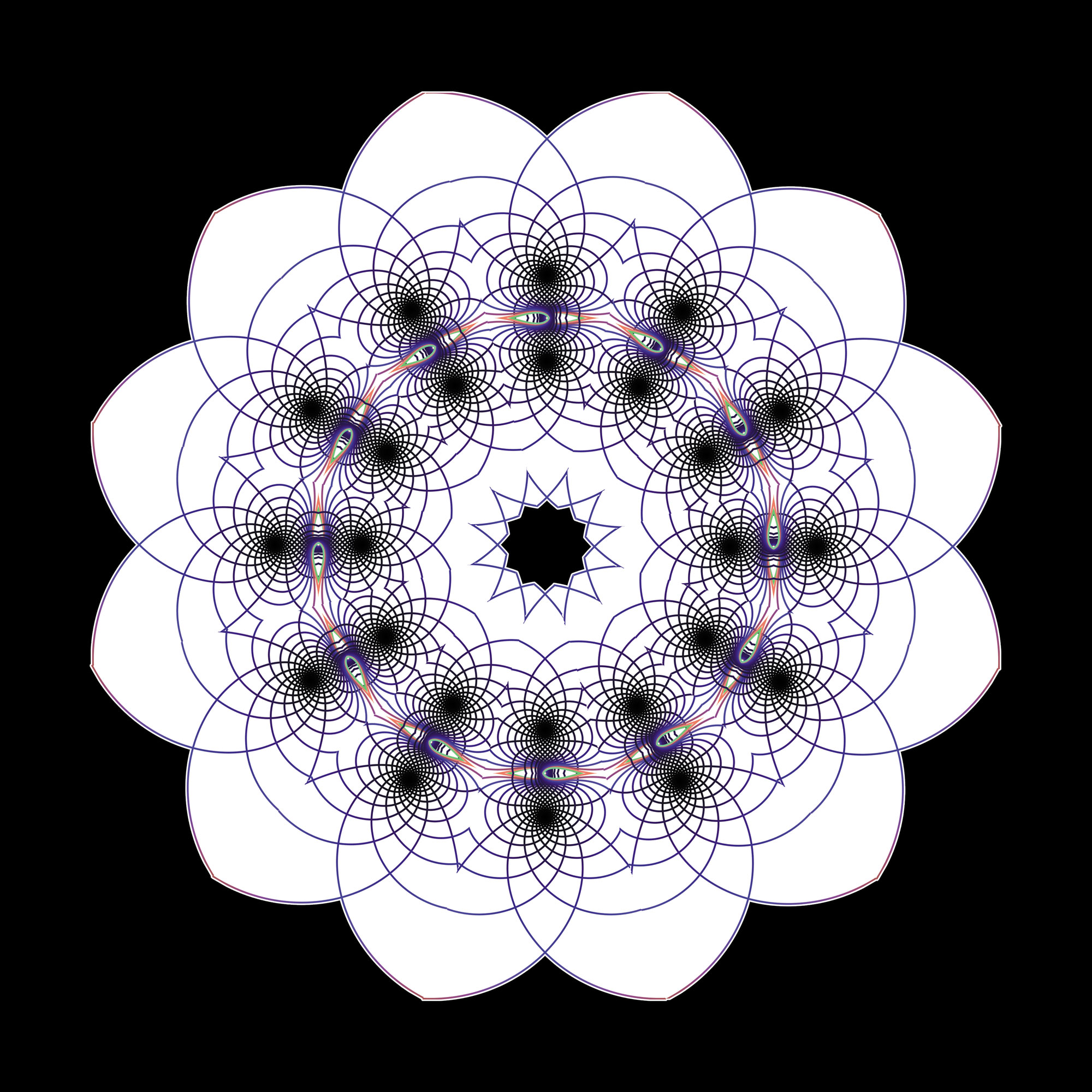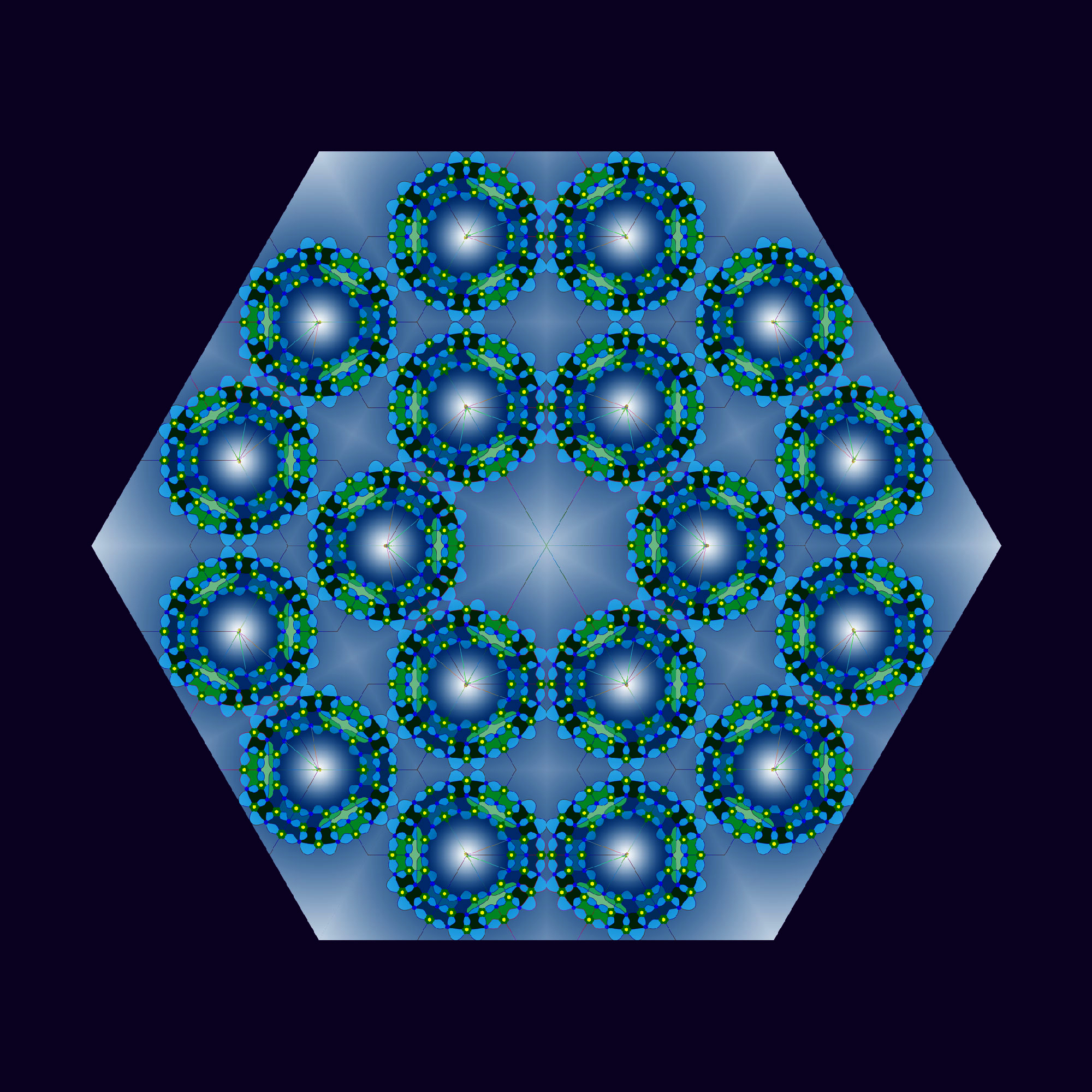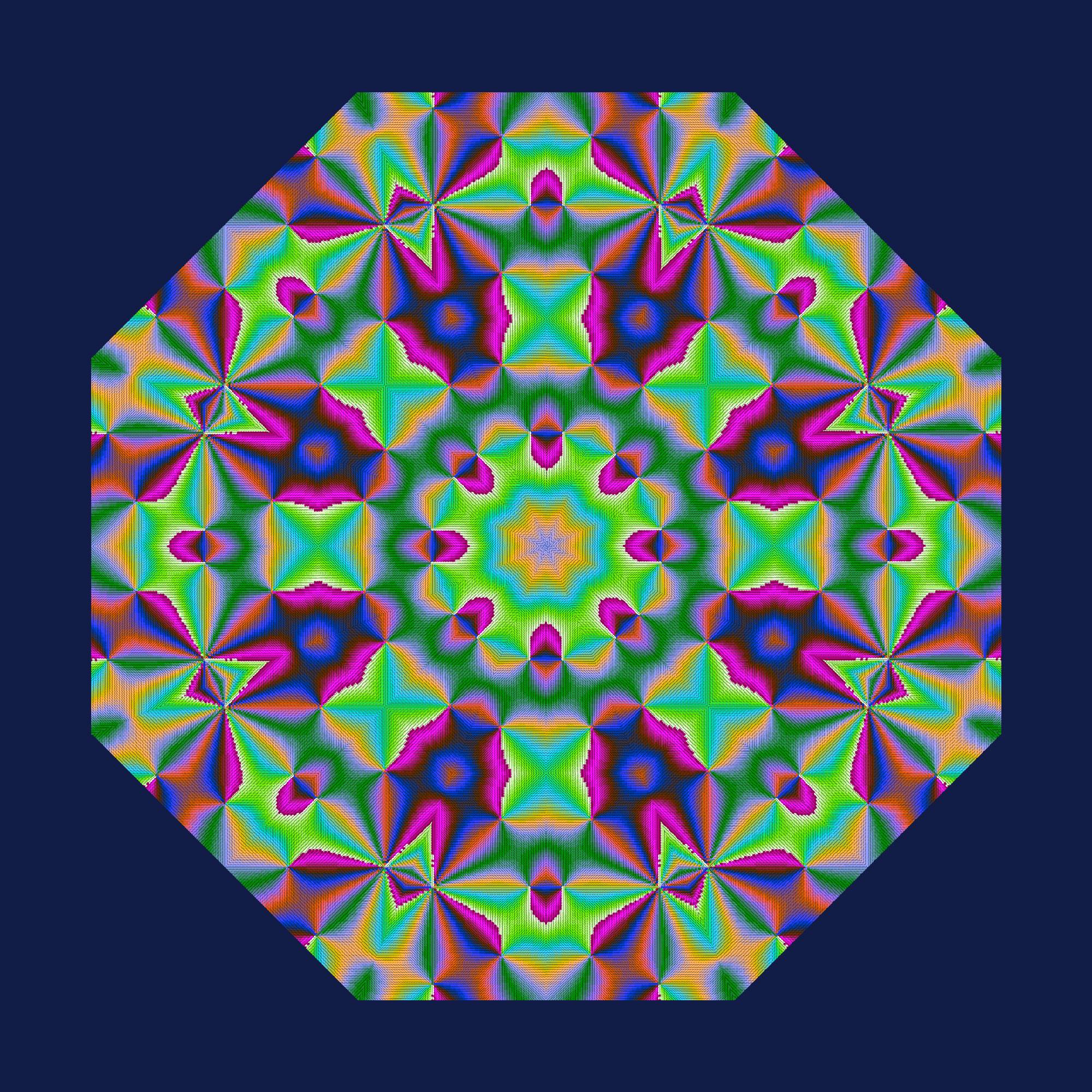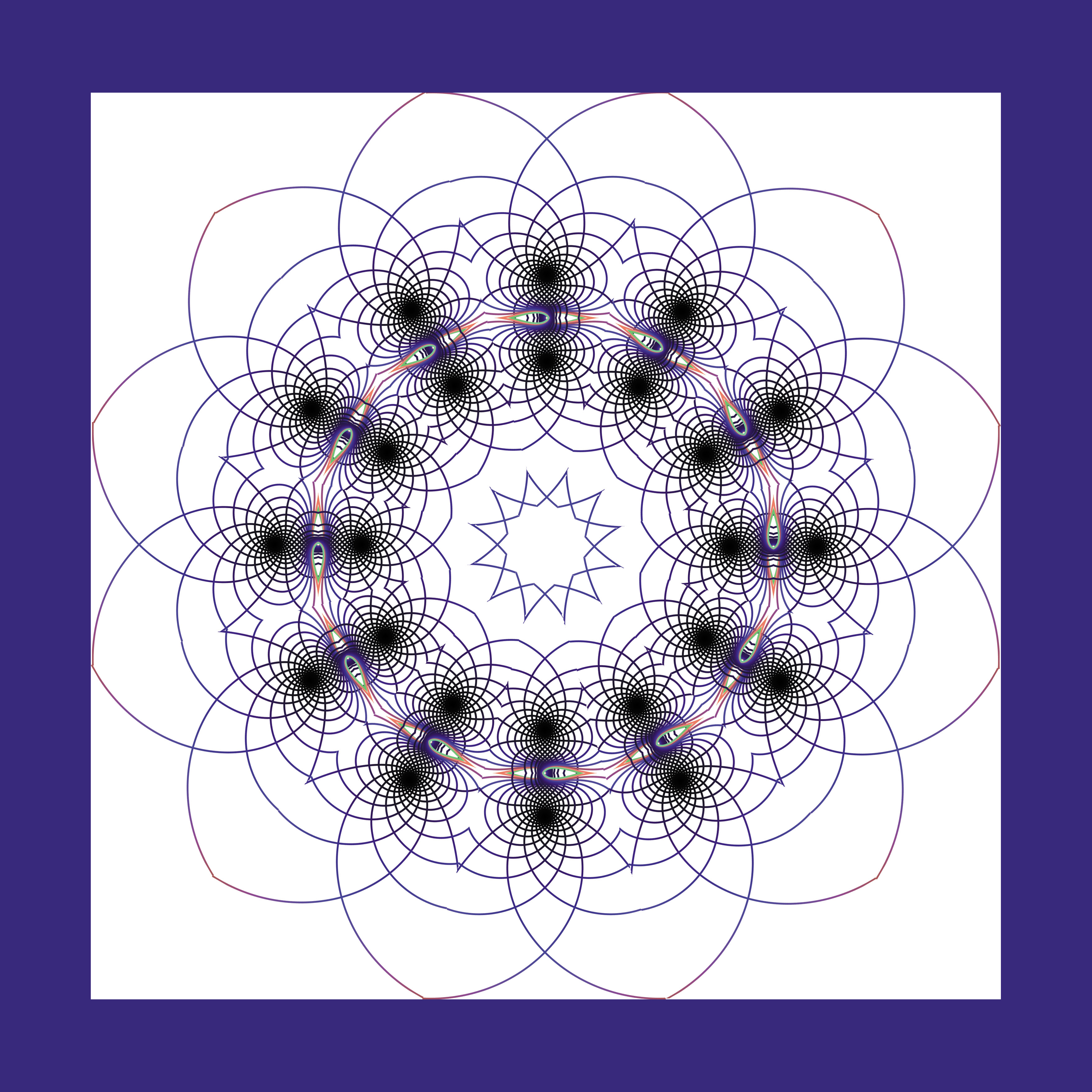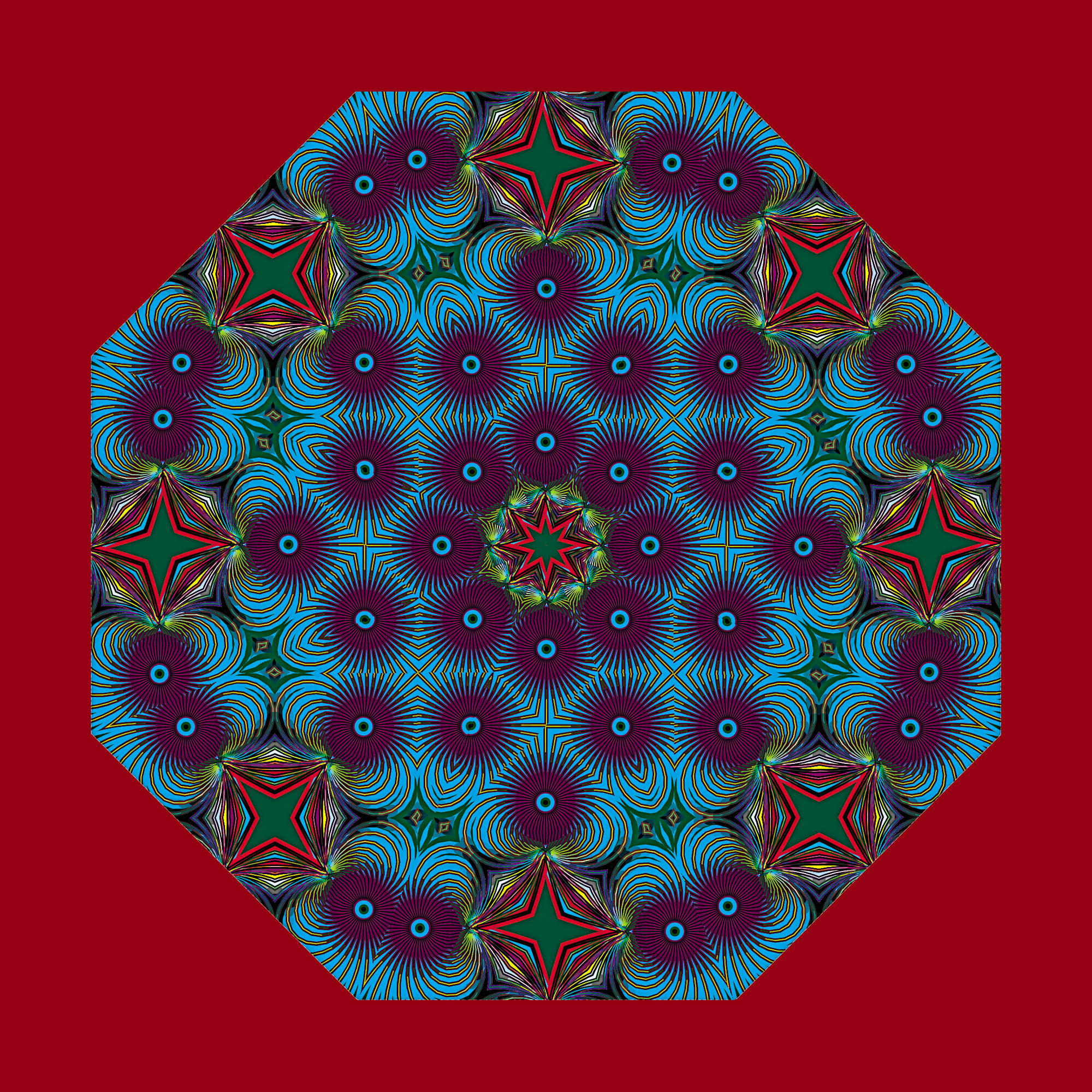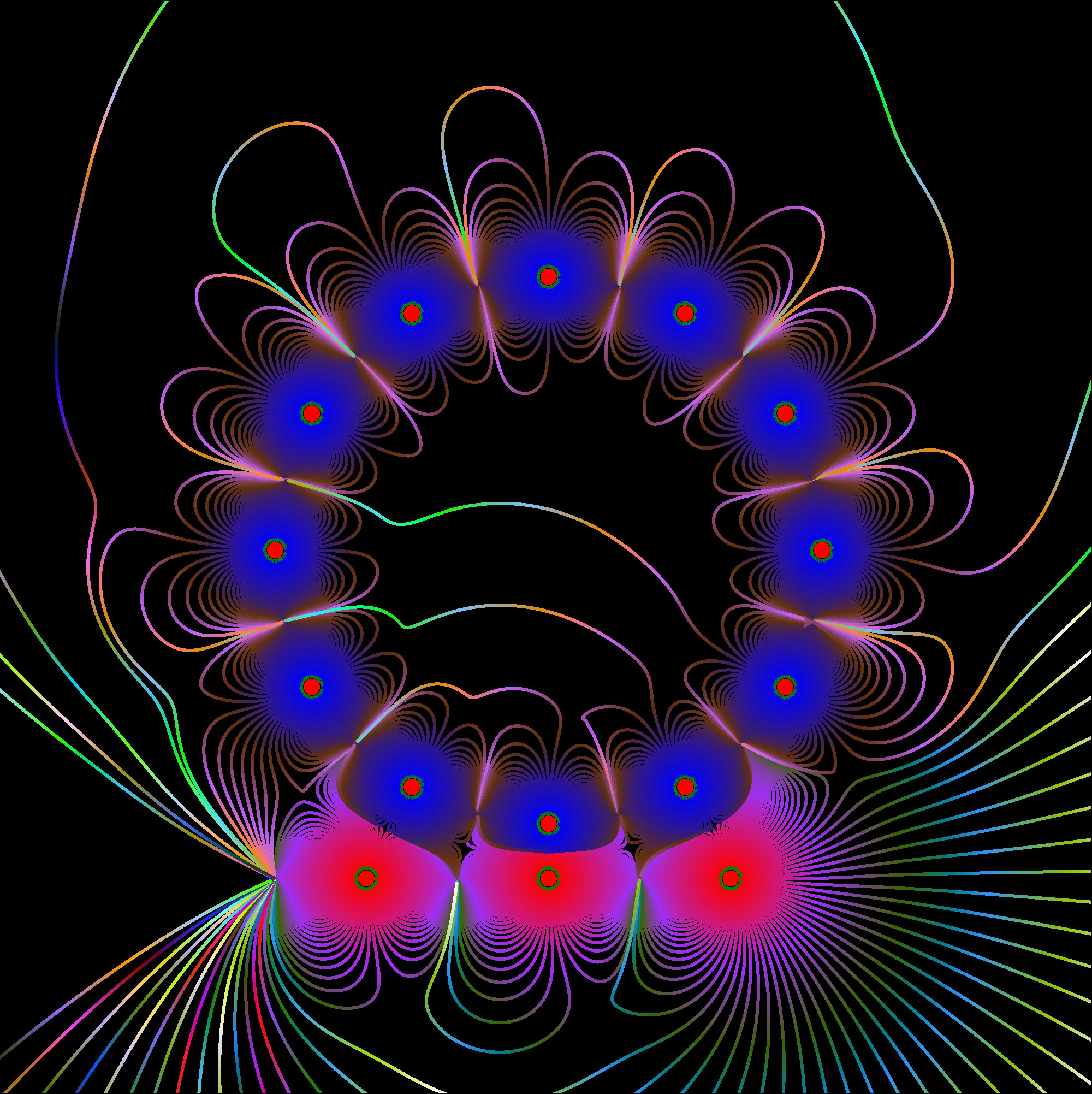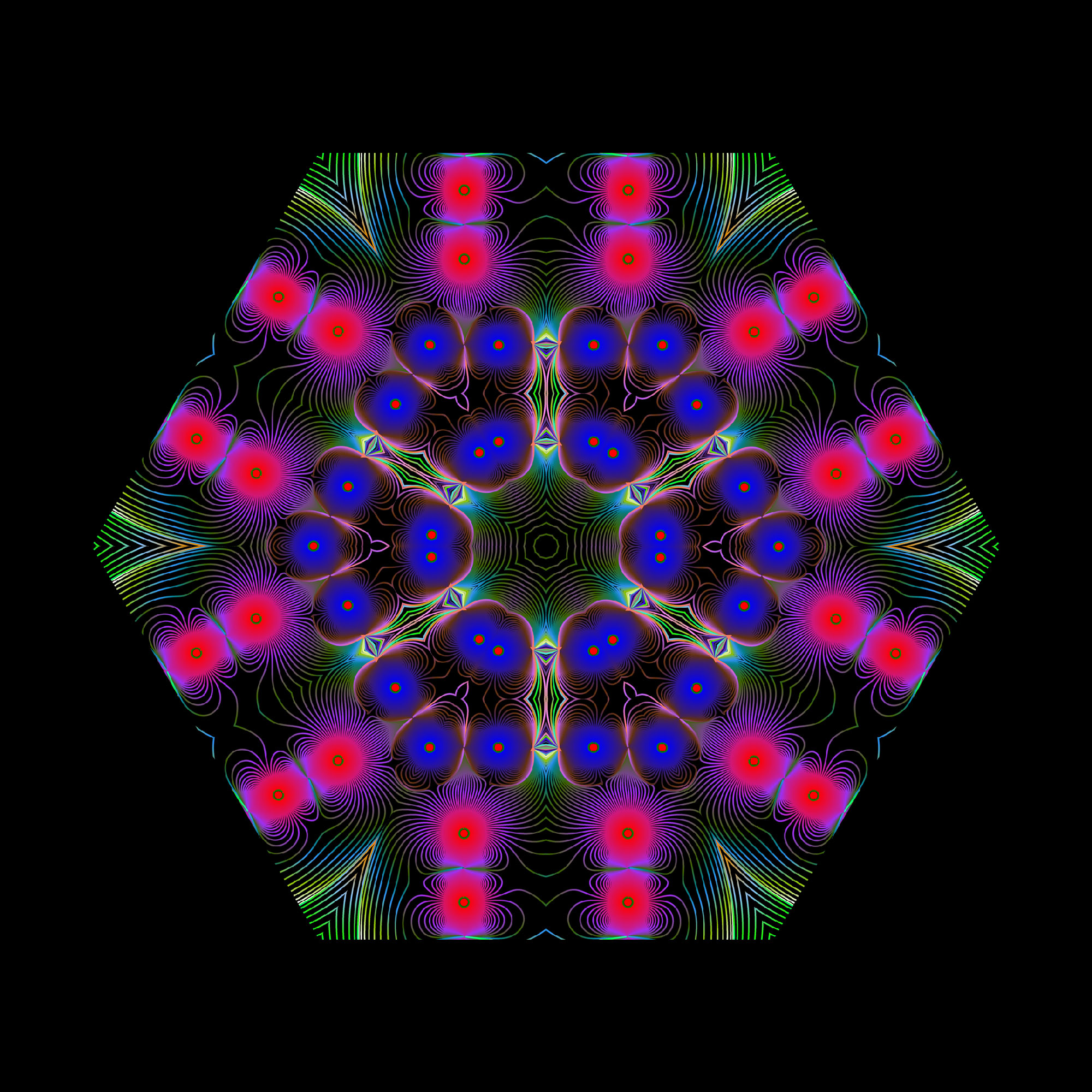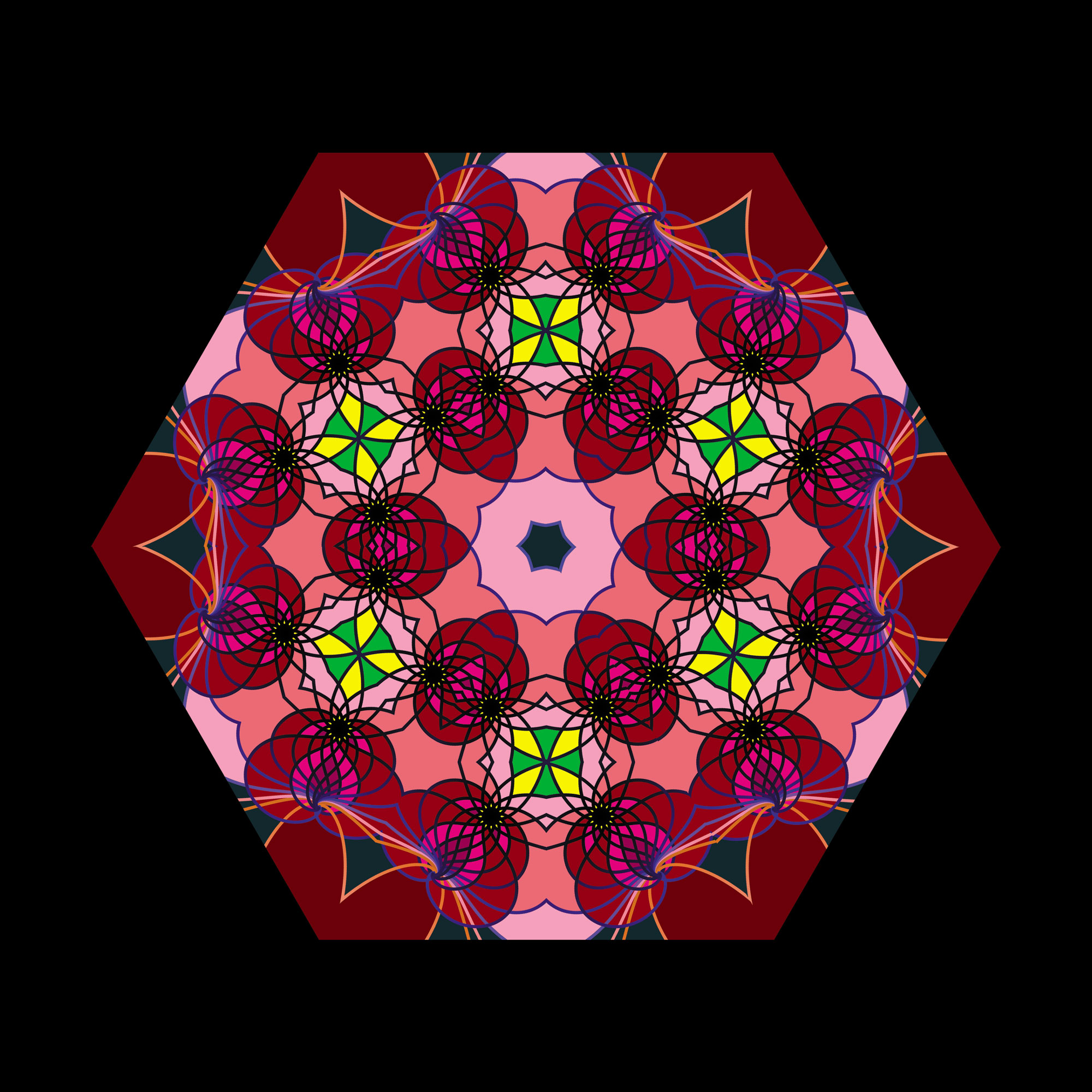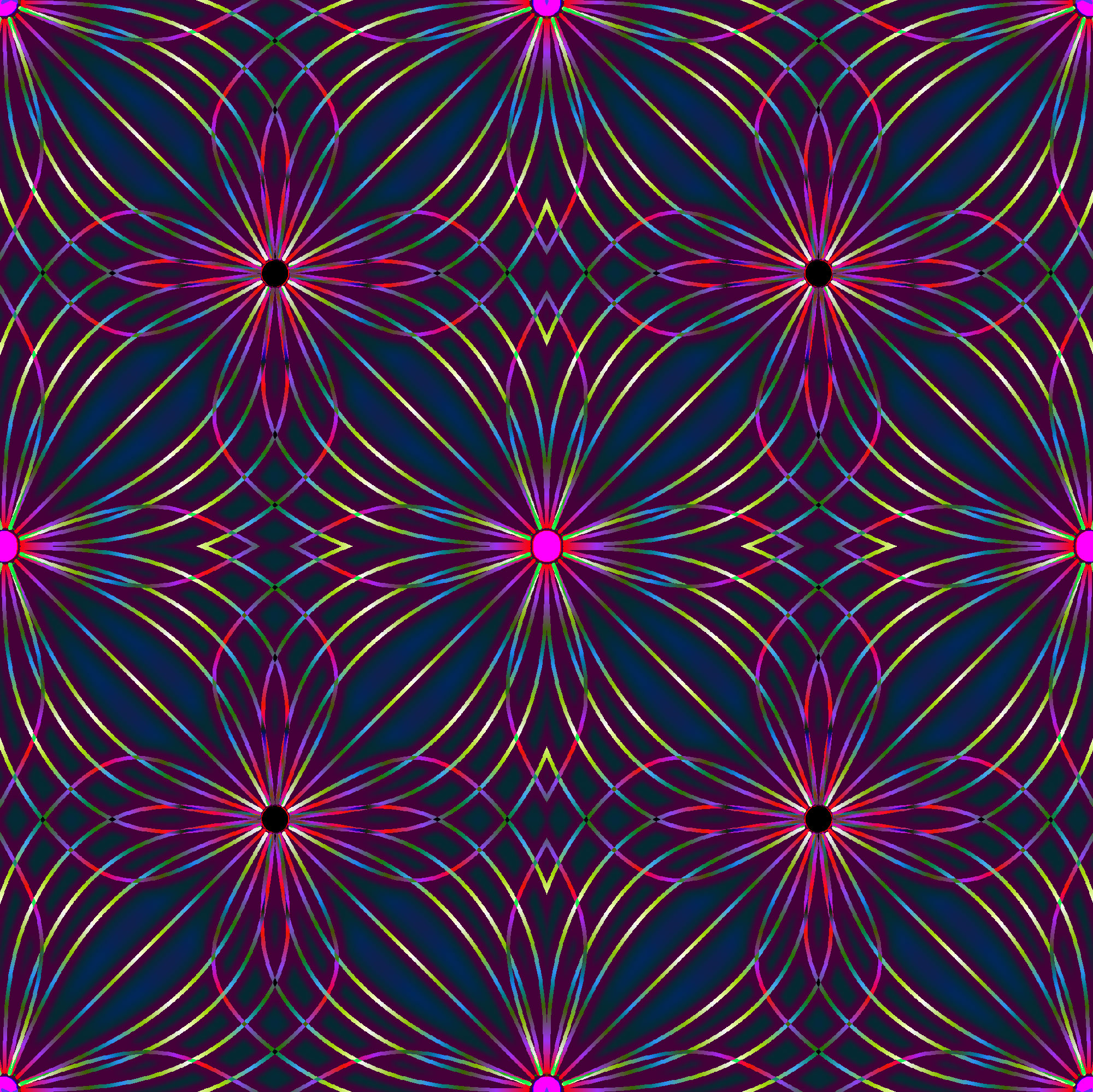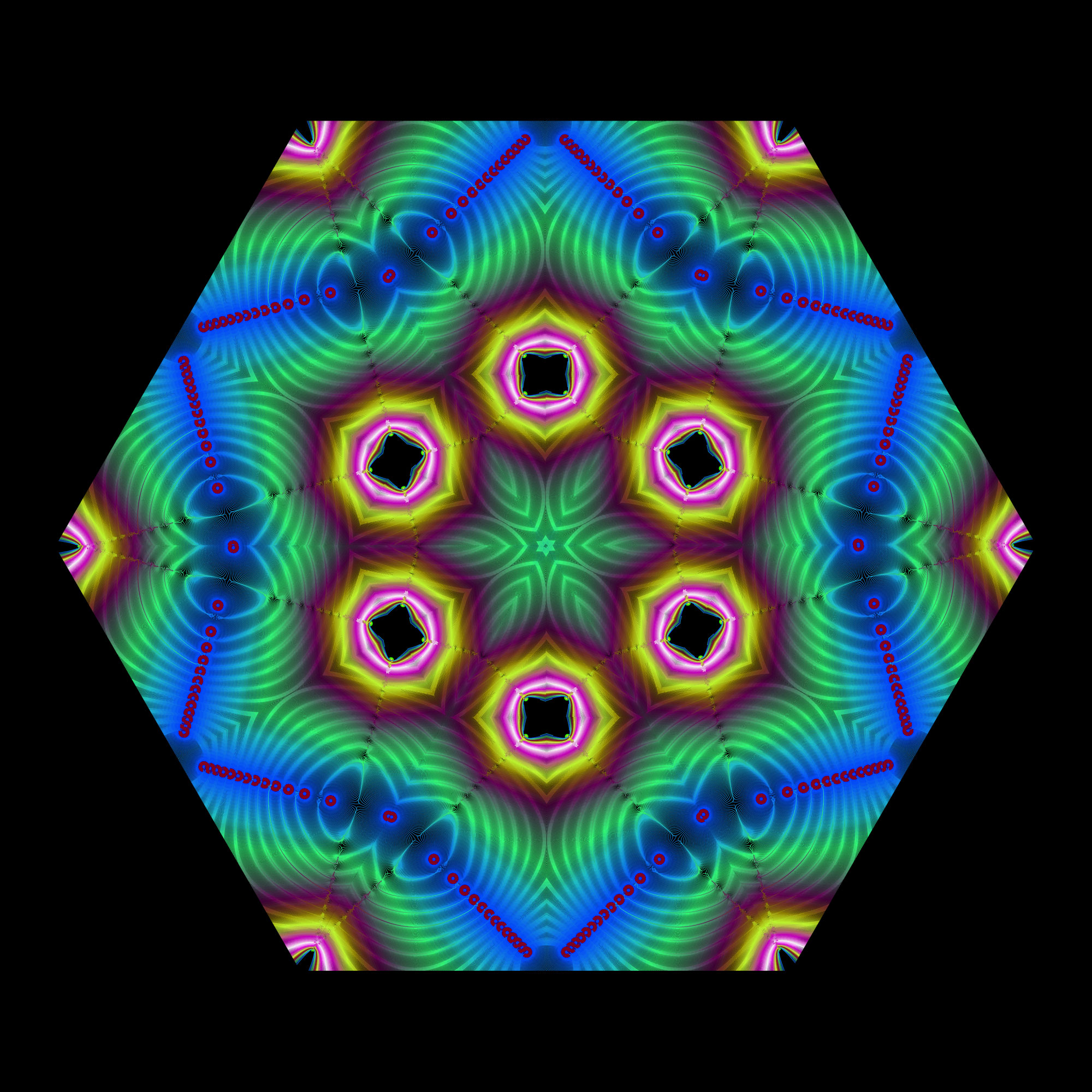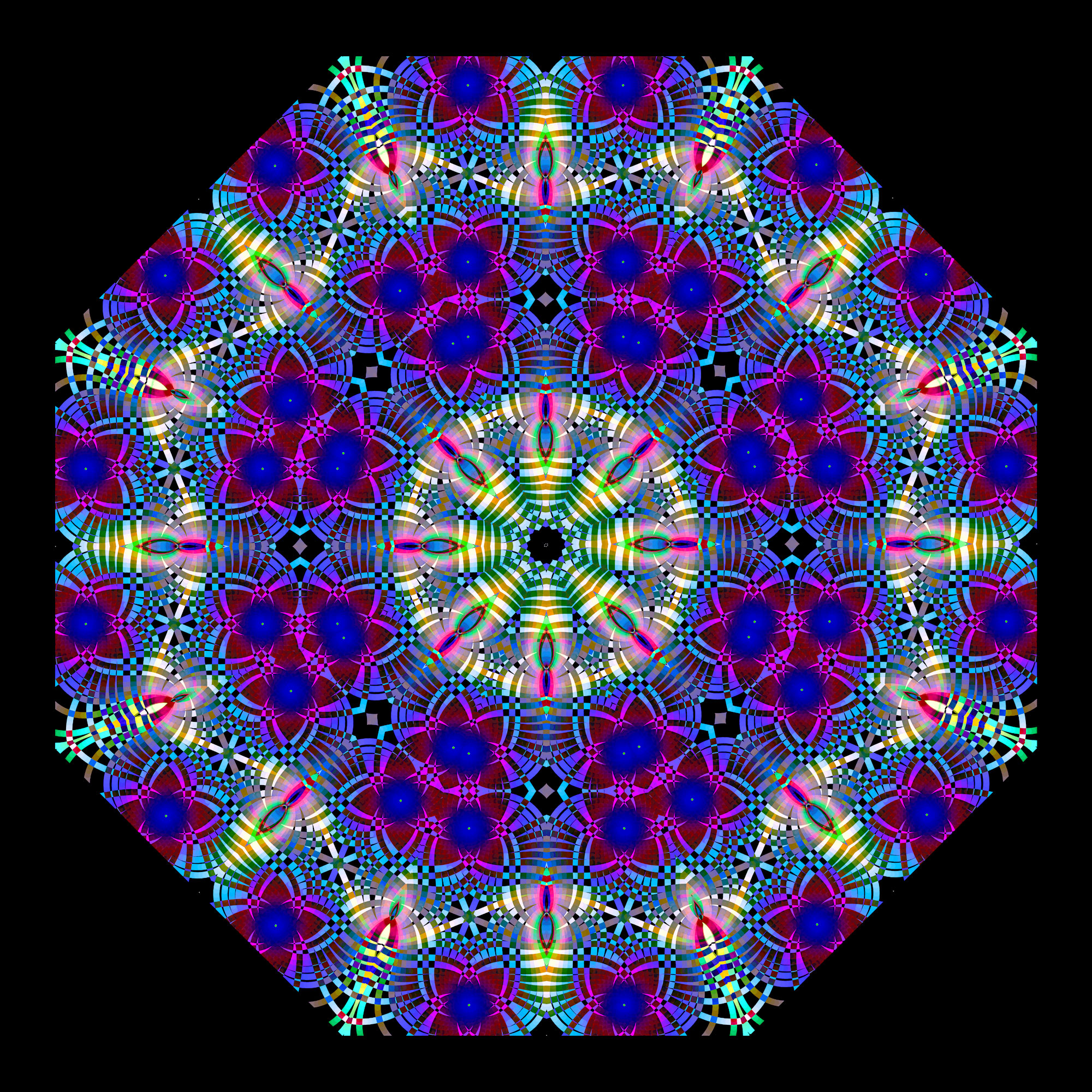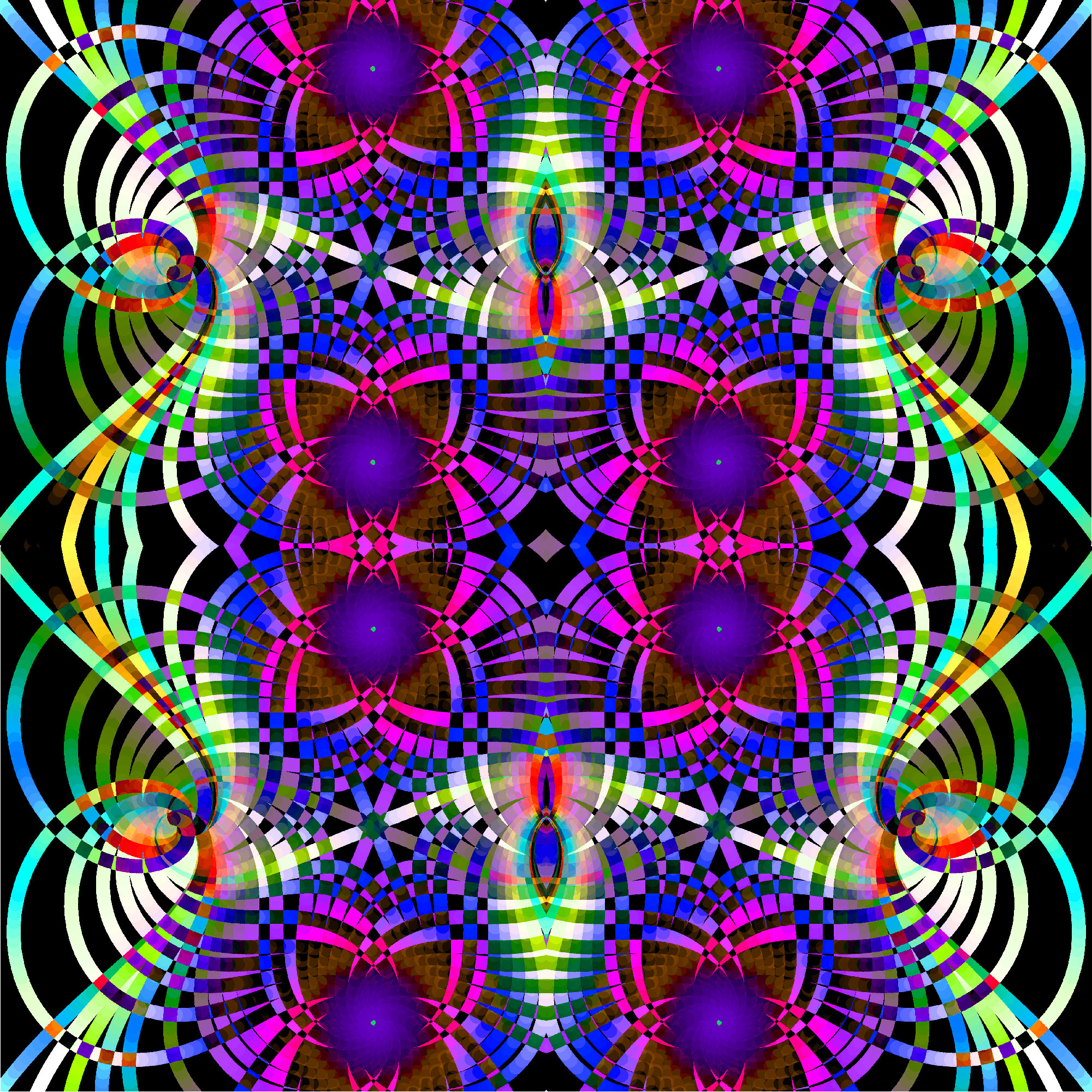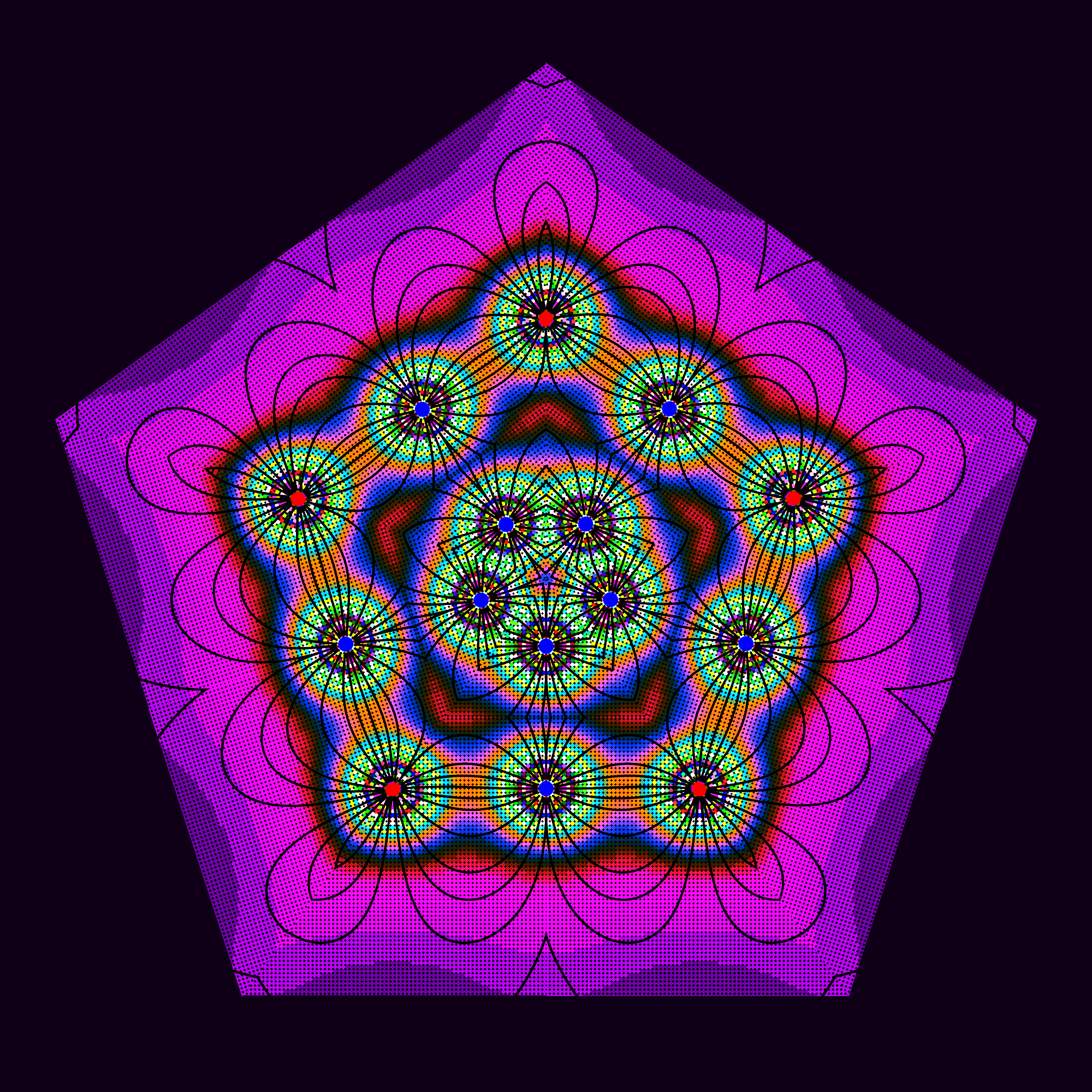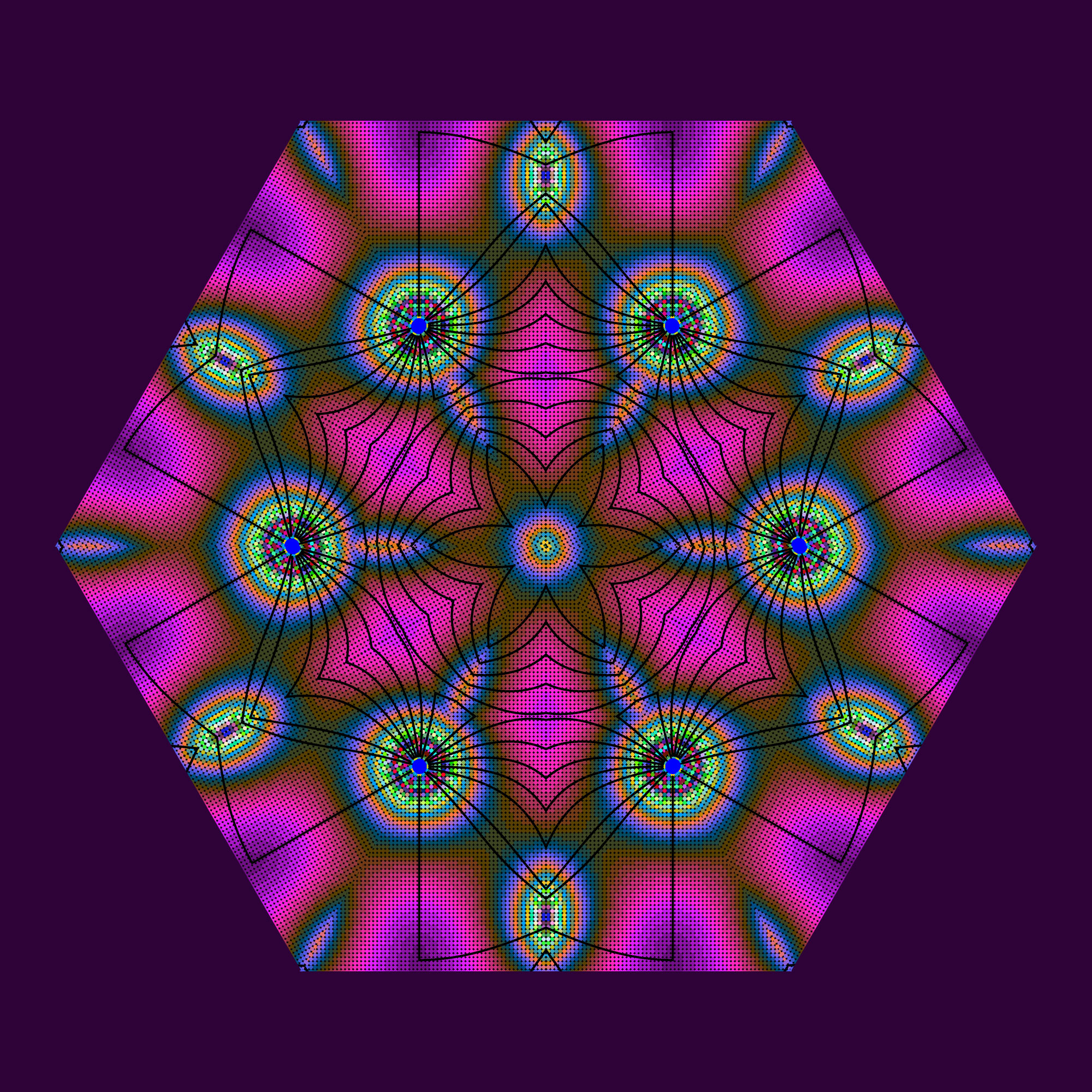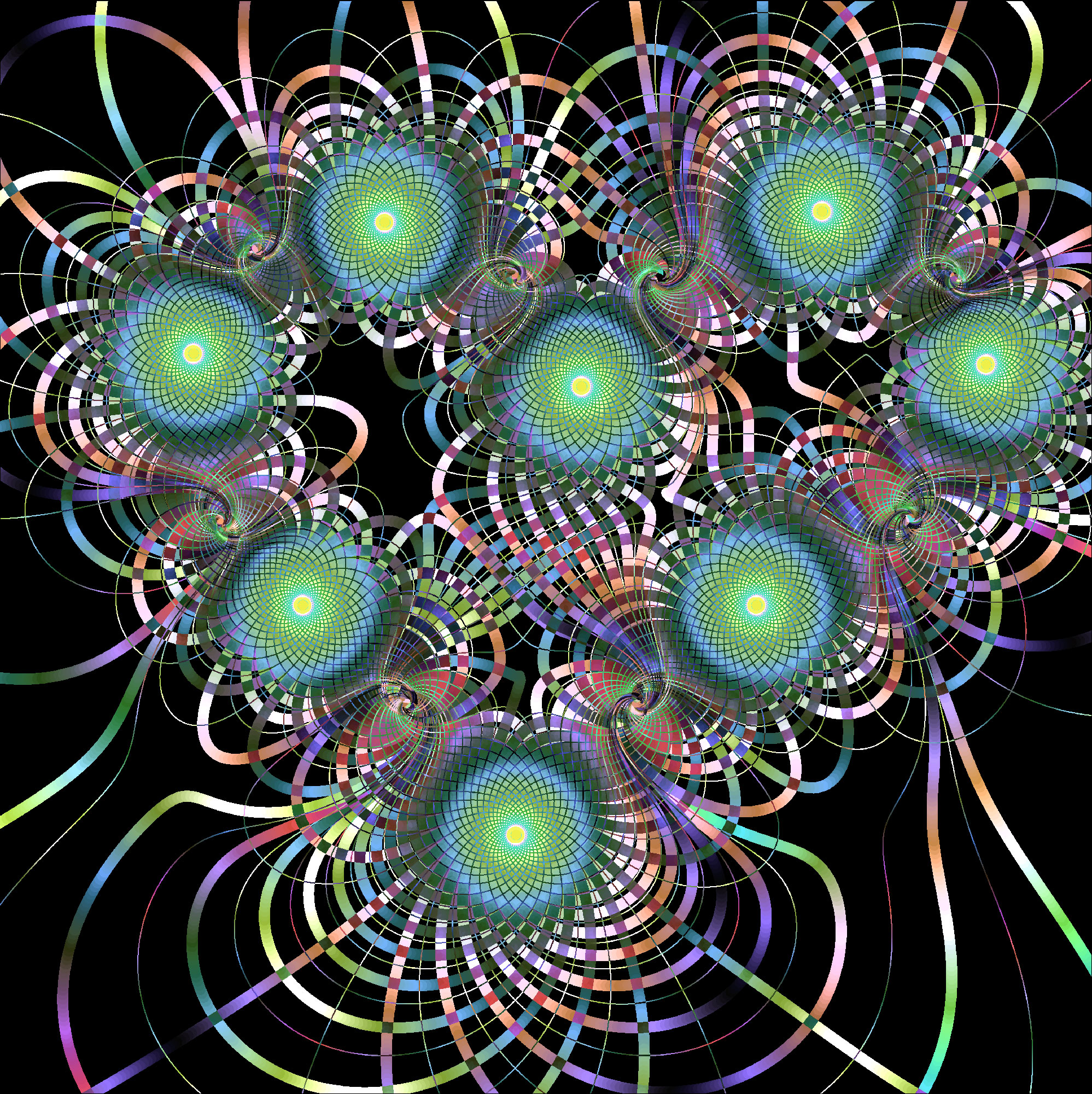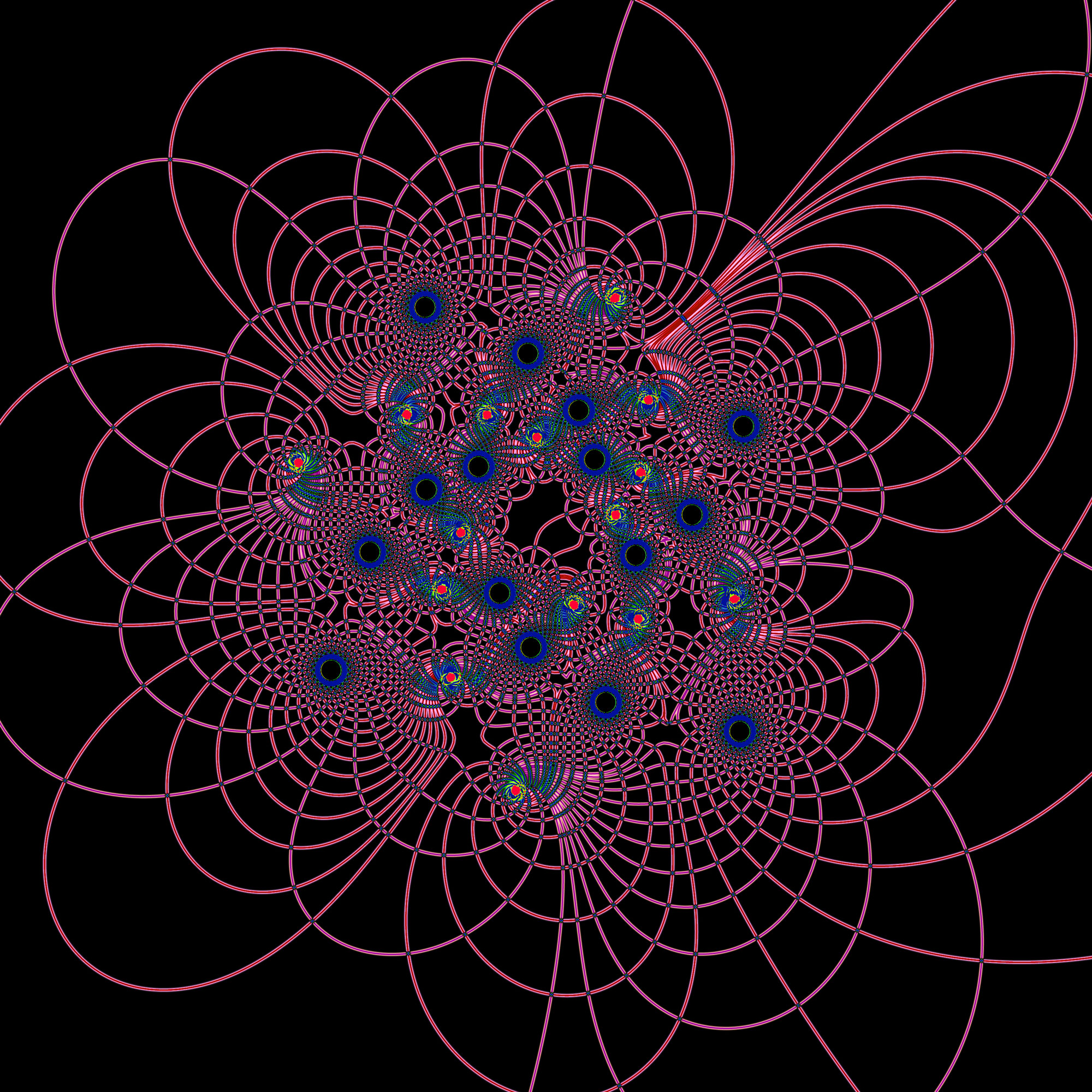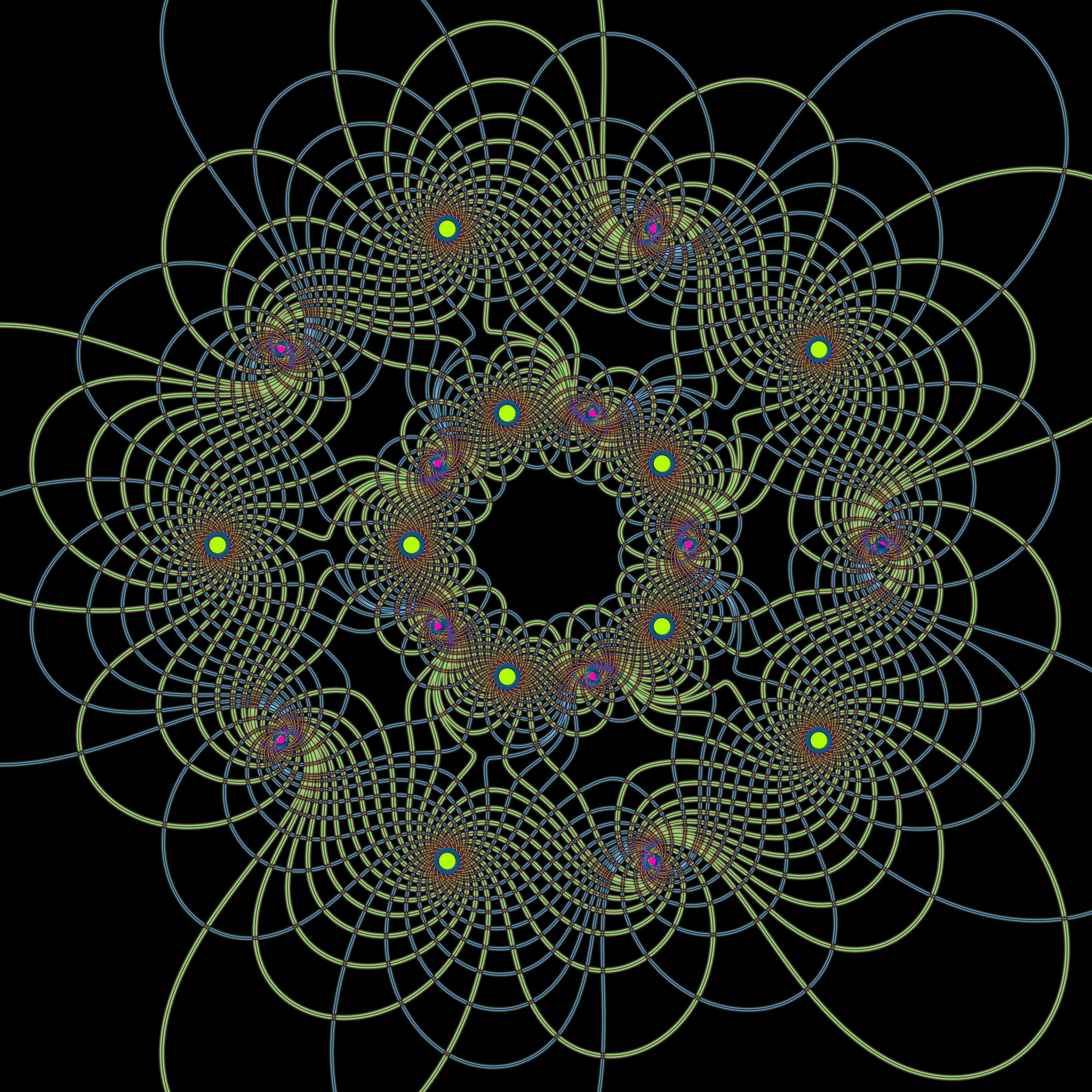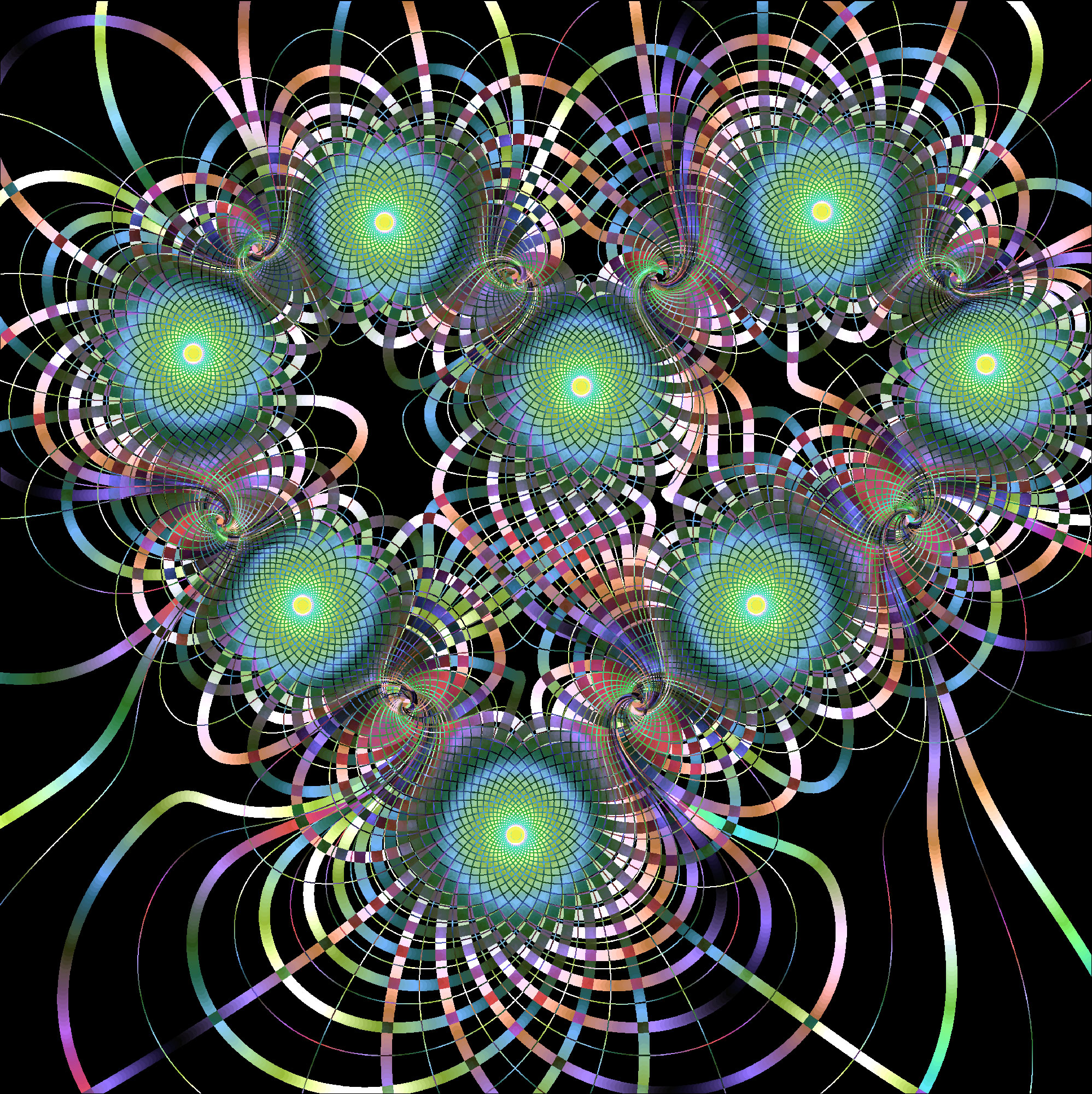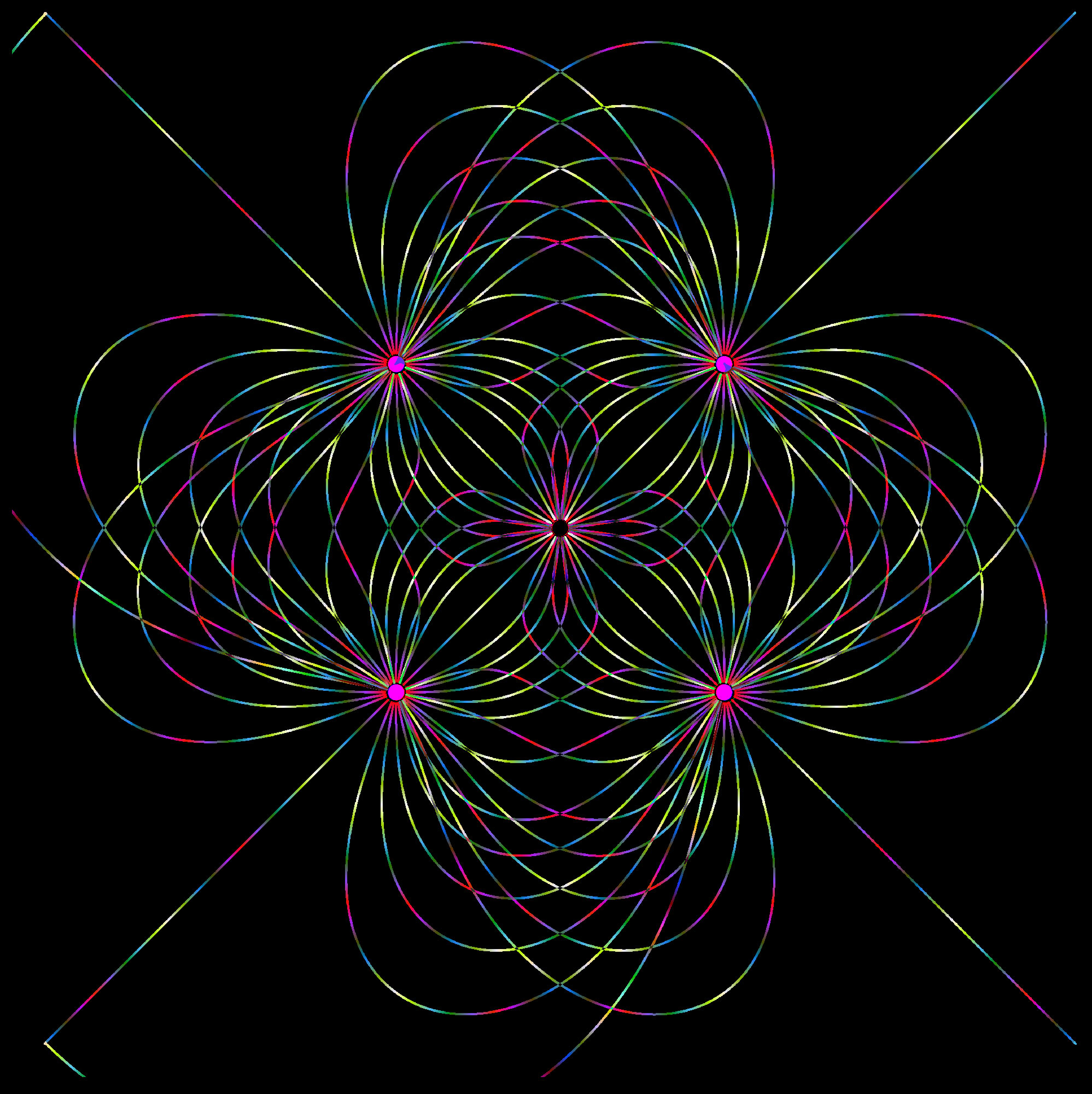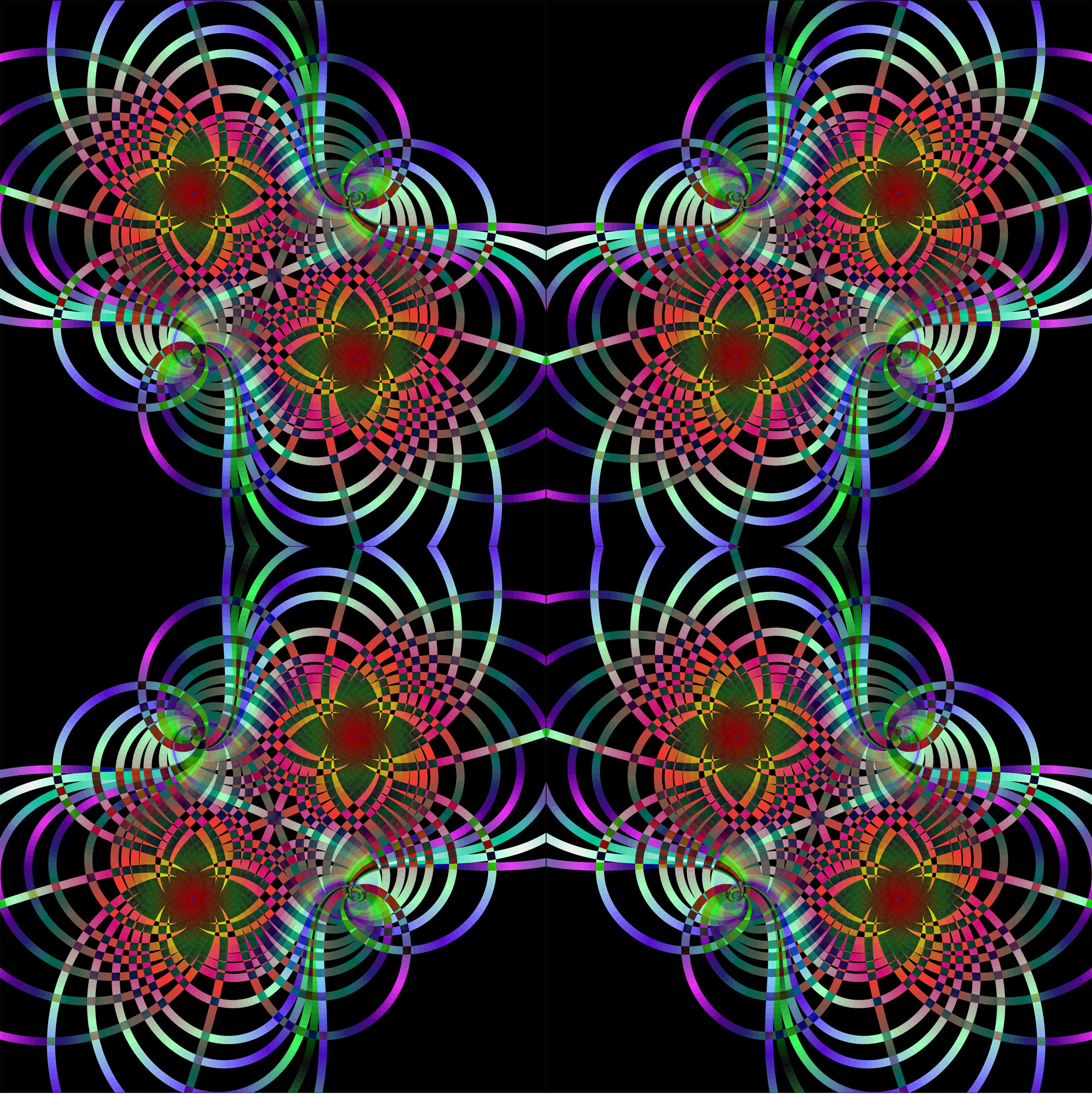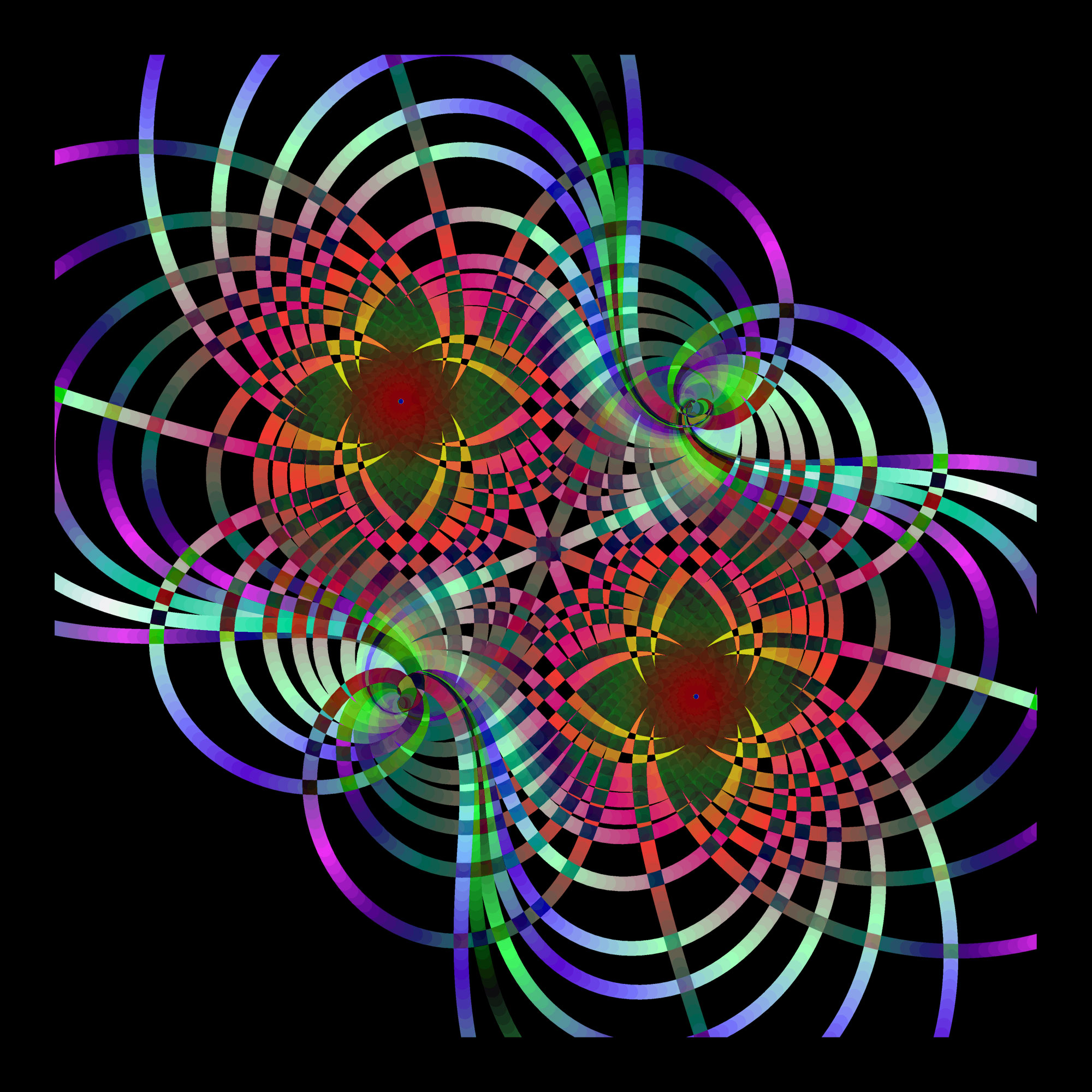More than 20 years ago I had a successful show of pictures that were based on a simulation I wrote of the magnetic field. It would draw "lines of force" from "positive" poles to "negative" poles. This shows a simple case of two poles with 10 lines of force.
 Ixicabal
The method is pretty simple. I start a line by placing a + particle just outside a + pole. I think of each pole calling to the particle. The + pole is saying go away to the + particle while the - pole is saying come here. The combination of those signals generates a direction to step in. The particle makes a step in that direction and then the process repeats until the - pole is reached. Then I start a new line.
Ixicabal
The method is pretty simple. I start a line by placing a + particle just outside a + pole. I think of each pole calling to the particle. The + pole is saying go away to the + particle while the - pole is saying come here. The combination of those signals generates a direction to step in. The particle makes a step in that direction and then the process repeats until the - pole is reached. Then I start a new line.
 Yay
Of course if you can do that with just two poles you can do it with many placed in any pattern you want.
When I did my first series of lines of force pictures (Linofo) I started by imagining a field of compass needles around the poles.
Yay
Of course if you can do that with just two poles you can do it with many placed in any pattern you want.
When I did my first series of lines of force pictures (Linofo) I started by imagining a field of compass needles around the poles.
 Gownobi-Compass
Gownobi shows a pattern of poles and the effect of that on a field of compass needles. The color in that picture correlates to the angle of the needle.
Gownobi-Compass
Gownobi shows a pattern of poles and the effect of that on a field of compass needles. The color in that picture correlates to the angle of the needle.
 Magnet
In Magnet the color correlates to the strength of the field at that place.
Magnet
In Magnet the color correlates to the strength of the field at that place.
 Jupmina
I can set the color of the drawn line according to a color I assign to the poles and I'm stepping along a line of force I can keep track of how many steps I've done and correlate that with the color of the little line I draw. Jupmina shows what that is like when very many lines emerge from a pole.
Heyriga, Officega, Outlier and Tarpori are examples of that.
Jupmina
I can set the color of the drawn line according to a color I assign to the poles and I'm stepping along a line of force I can keep track of how many steps I've done and correlate that with the color of the little line I draw. Jupmina shows what that is like when very many lines emerge from a pole.
Heyriga, Officega, Outlier and Tarpori are examples of that.
 Heyriga
Heyriga
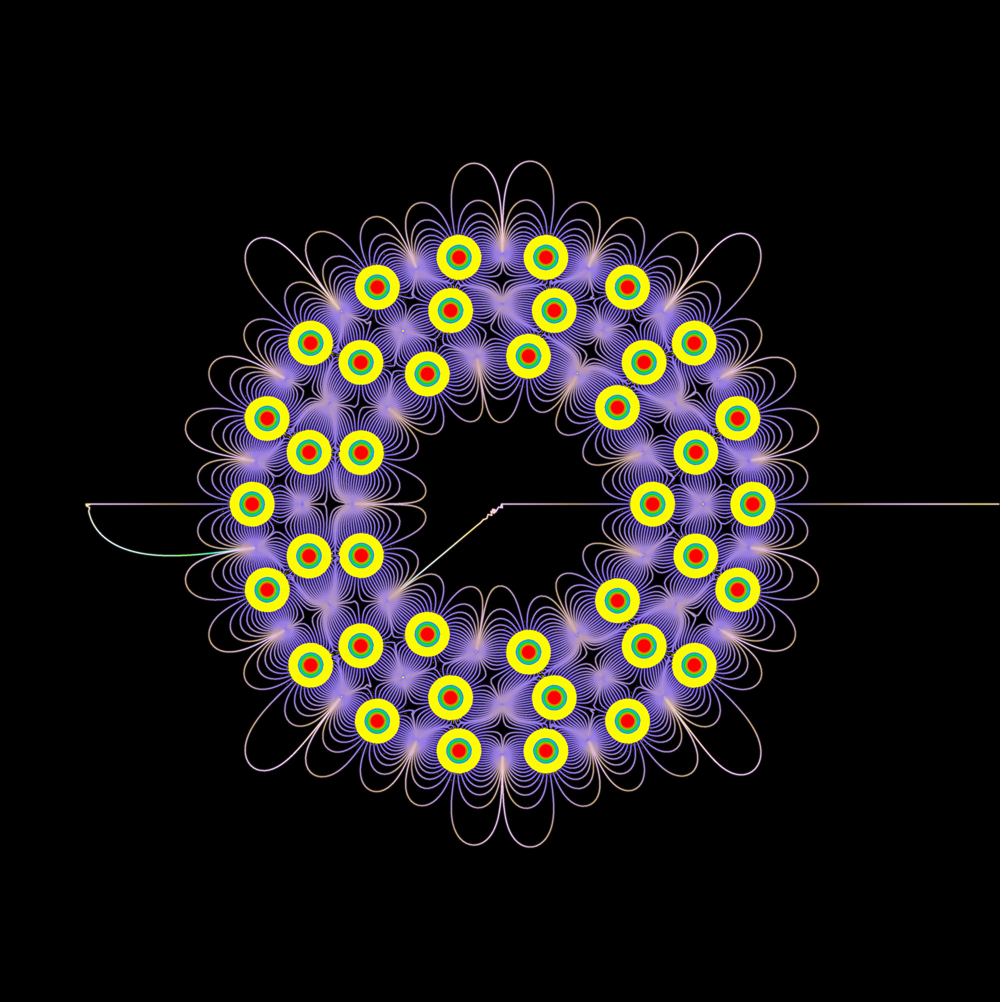 Officega
Officega
 Outlier
Outlier
 Tarpori
I made a heart shape in a paint programä and used that to give me coordinates for placing poles. Once I had the lines of force drawn I moved them back into my paint program and got playful with the color design. This is a very enjoyable part of this series.
Tarpori
I made a heart shape in a paint programä and used that to give me coordinates for placing poles. Once I had the lines of force drawn I moved them back into my paint program and got playful with the color design. This is a very enjoyable part of this series.
 Heart-3
I can do things with the lines of force that can't be done in reality. The lines aren't actually created by a magnetic field. My particle measurs a field direction and steps that way. I don't think a real line of force would act like that. But once I have found the direction to step in, I can add a constant amount to that and step in that direction instead. This leads to spiralling lines of force.
Heart-3
I can do things with the lines of force that can't be done in reality. The lines aren't actually created by a magnetic field. My particle measurs a field direction and steps that way. I don't think a real line of force would act like that. But once I have found the direction to step in, I can add a constant amount to that and step in that direction instead. This leads to spiralling lines of force.
 ArabarbImagine adding 45 degrees to the field direction. You get a set of spiral coiling one way. If you subtract 45 degrees then you get a set of spirals coiling the other way. If you overlap those then you get a web of the spirals where every intersection of lines is at 90 degrees as we see in Arabarb.
ArabarbImagine adding 45 degrees to the field direction. You get a set of spiral coiling one way. If you subtract 45 degrees then you get a set of spirals coiling the other way. If you overlap those then you get a web of the spirals where every intersection of lines is at 90 degrees as we see in Arabarb.
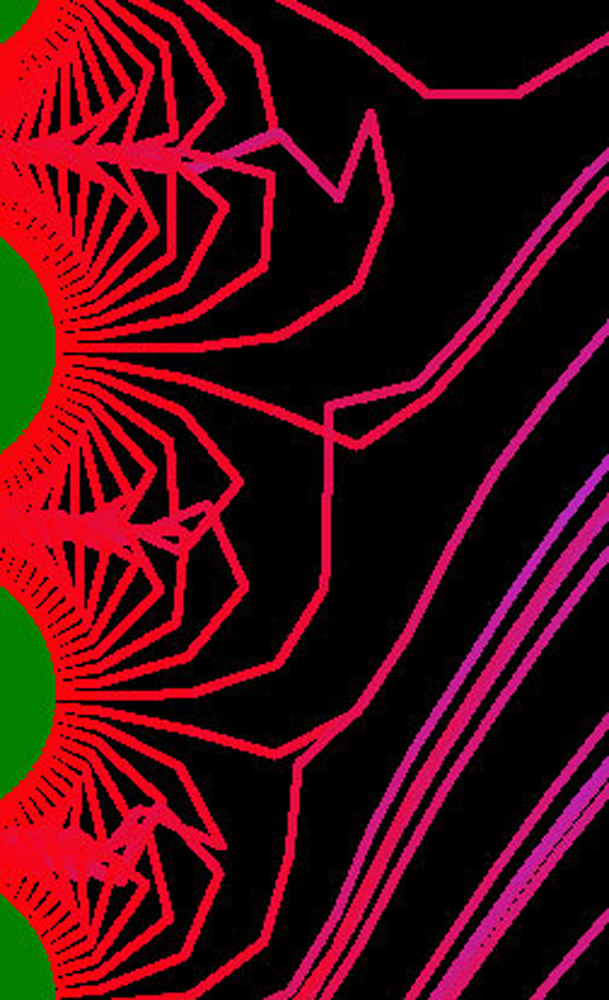 Jumping Lines
Jumping Lines shows an interesting aspect of the simulation that also departs from reality. I'm making steps of finite size. Unless the step size is very small the landing point of the step will be a little bit off where a real line would be. Then the next step will be a little bit off in the other direction but over many steps the steps start landing on the actual line again..
Jumping Lines
Jumping Lines shows an interesting aspect of the simulation that also departs from reality. I'm making steps of finite size. Unless the step size is very small the landing point of the step will be a little bit off where a real line would be. Then the next step will be a little bit off in the other direction but over many steps the steps start landing on the actual line again..
 Ixicabal
The method is pretty simple. I start a line by placing a + particle just outside a + pole. I think of each pole calling to the particle. The + pole is saying go away to the + particle while the - pole is saying come here. The combination of those signals generates a direction to step in. The particle makes a step in that direction and then the process repeats until the - pole is reached. Then I start a new line.
Ixicabal
The method is pretty simple. I start a line by placing a + particle just outside a + pole. I think of each pole calling to the particle. The + pole is saying go away to the + particle while the - pole is saying come here. The combination of those signals generates a direction to step in. The particle makes a step in that direction and then the process repeats until the - pole is reached. Then I start a new line.
 Yay
Of course if you can do that with just two poles you can do it with many placed in any pattern you want.
When I did my first series of lines of force pictures (Linofo) I started by imagining a field of compass needles around the poles.
Yay
Of course if you can do that with just two poles you can do it with many placed in any pattern you want.
When I did my first series of lines of force pictures (Linofo) I started by imagining a field of compass needles around the poles.
 Gownobi-Compass
Gownobi shows a pattern of poles and the effect of that on a field of compass needles. The color in that picture correlates to the angle of the needle.
Gownobi-Compass
Gownobi shows a pattern of poles and the effect of that on a field of compass needles. The color in that picture correlates to the angle of the needle.
 Magnet
In Magnet the color correlates to the strength of the field at that place.
Magnet
In Magnet the color correlates to the strength of the field at that place.
 Jupmina
I can set the color of the drawn line according to a color I assign to the poles and I'm stepping along a line of force I can keep track of how many steps I've done and correlate that with the color of the little line I draw. Jupmina shows what that is like when very many lines emerge from a pole.
Heyriga, Officega, Outlier and Tarpori are examples of that.
Jupmina
I can set the color of the drawn line according to a color I assign to the poles and I'm stepping along a line of force I can keep track of how many steps I've done and correlate that with the color of the little line I draw. Jupmina shows what that is like when very many lines emerge from a pole.
Heyriga, Officega, Outlier and Tarpori are examples of that.
 Heyriga
Heyriga
 Officega
Officega
 Outlier
Outlier
 Tarpori
I made a heart shape in a paint programä and used that to give me coordinates for placing poles. Once I had the lines of force drawn I moved them back into my paint program and got playful with the color design. This is a very enjoyable part of this series.
Tarpori
I made a heart shape in a paint programä and used that to give me coordinates for placing poles. Once I had the lines of force drawn I moved them back into my paint program and got playful with the color design. This is a very enjoyable part of this series.
 Heart-3
I can do things with the lines of force that can't be done in reality. The lines aren't actually created by a magnetic field. My particle measurs a field direction and steps that way. I don't think a real line of force would act like that. But once I have found the direction to step in, I can add a constant amount to that and step in that direction instead. This leads to spiralling lines of force.
Heart-3
I can do things with the lines of force that can't be done in reality. The lines aren't actually created by a magnetic field. My particle measurs a field direction and steps that way. I don't think a real line of force would act like that. But once I have found the direction to step in, I can add a constant amount to that and step in that direction instead. This leads to spiralling lines of force.
 ArabarbImagine adding 45 degrees to the field direction. You get a set of spiral coiling one way. If you subtract 45 degrees then you get a set of spirals coiling the other way. If you overlap those then you get a web of the spirals where every intersection of lines is at 90 degrees as we see in Arabarb.
ArabarbImagine adding 45 degrees to the field direction. You get a set of spiral coiling one way. If you subtract 45 degrees then you get a set of spirals coiling the other way. If you overlap those then you get a web of the spirals where every intersection of lines is at 90 degrees as we see in Arabarb.
 Jumping Lines
Jumping Lines shows an interesting aspect of the simulation that also departs from reality. I'm making steps of finite size. Unless the step size is very small the landing point of the step will be a little bit off where a real line would be. Then the next step will be a little bit off in the other direction but over many steps the steps start landing on the actual line again..
Jumping Lines
Jumping Lines shows an interesting aspect of the simulation that also departs from reality. I'm making steps of finite size. Unless the step size is very small the landing point of the step will be a little bit off where a real line would be. Then the next step will be a little bit off in the other direction but over many steps the steps start landing on the actual line again..
